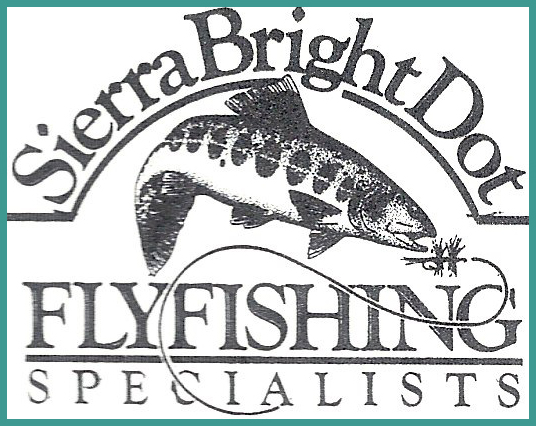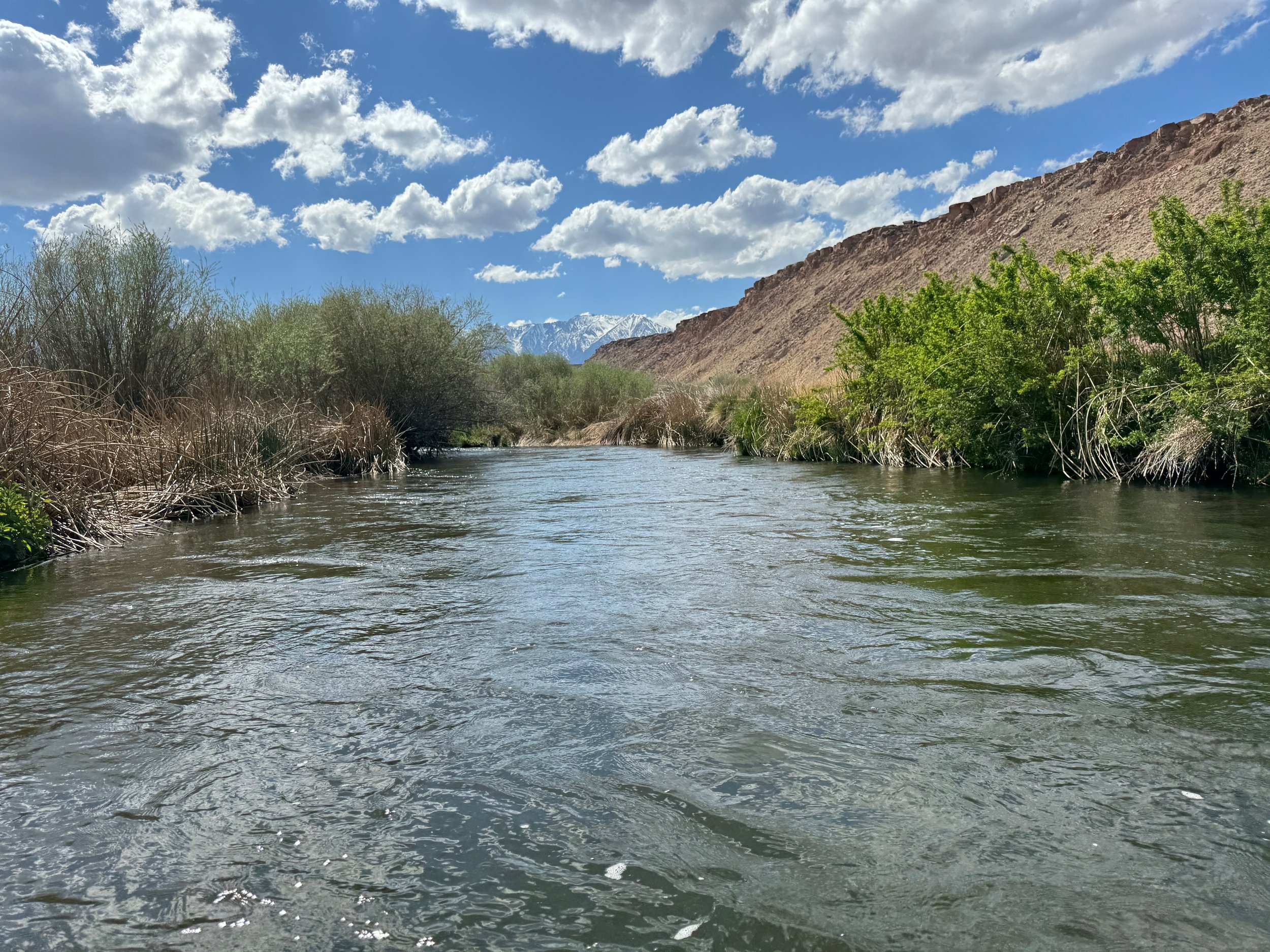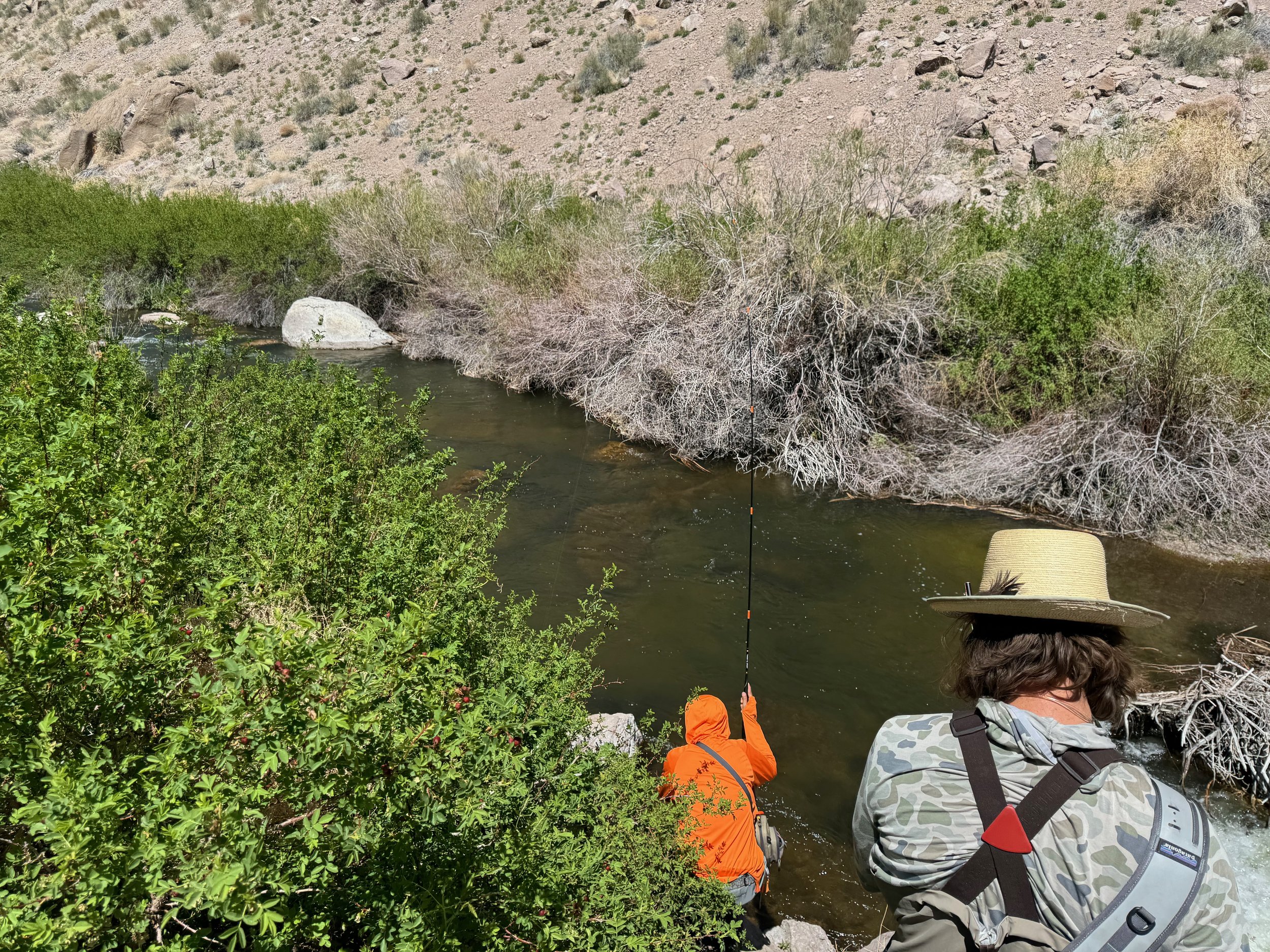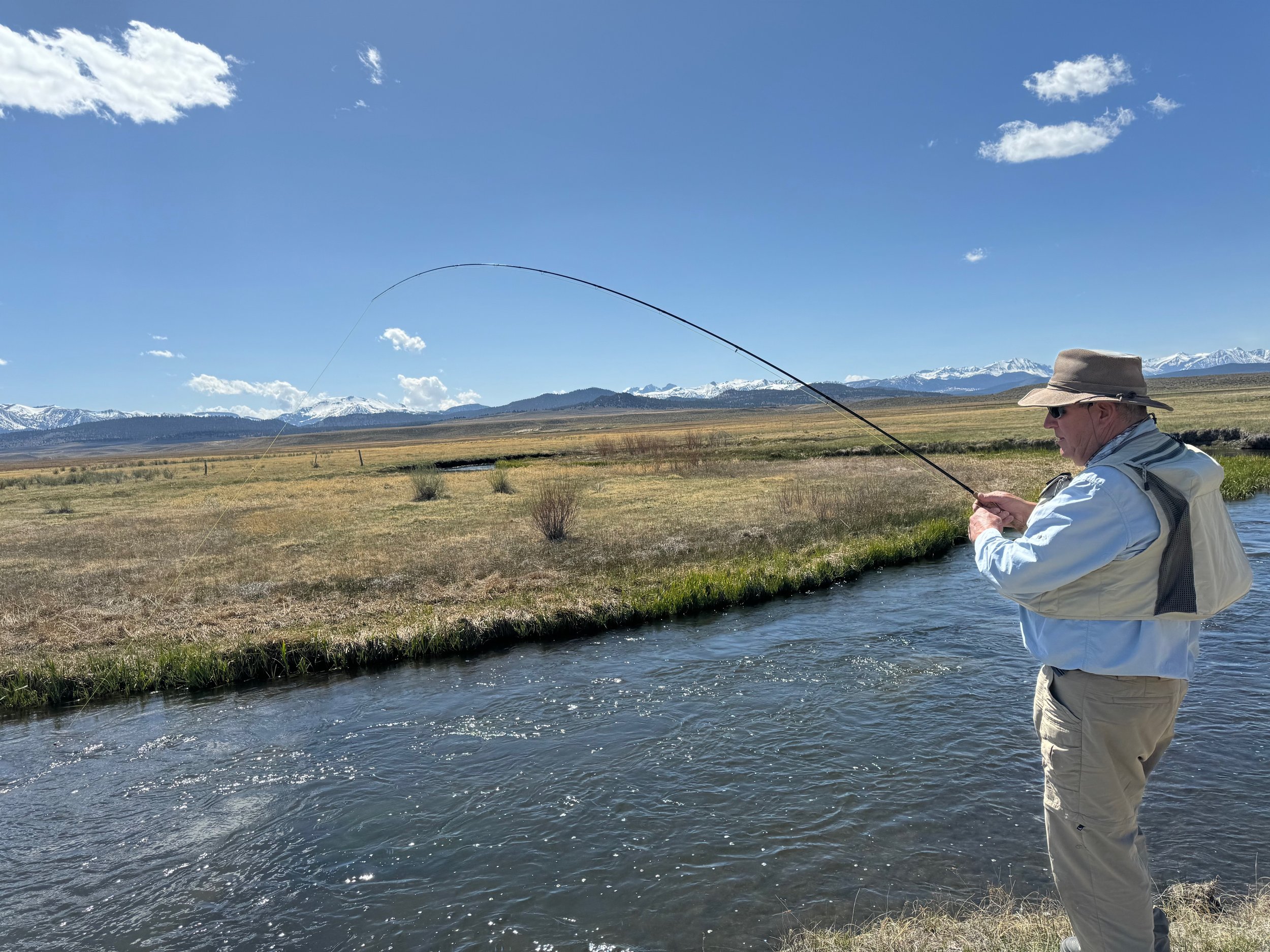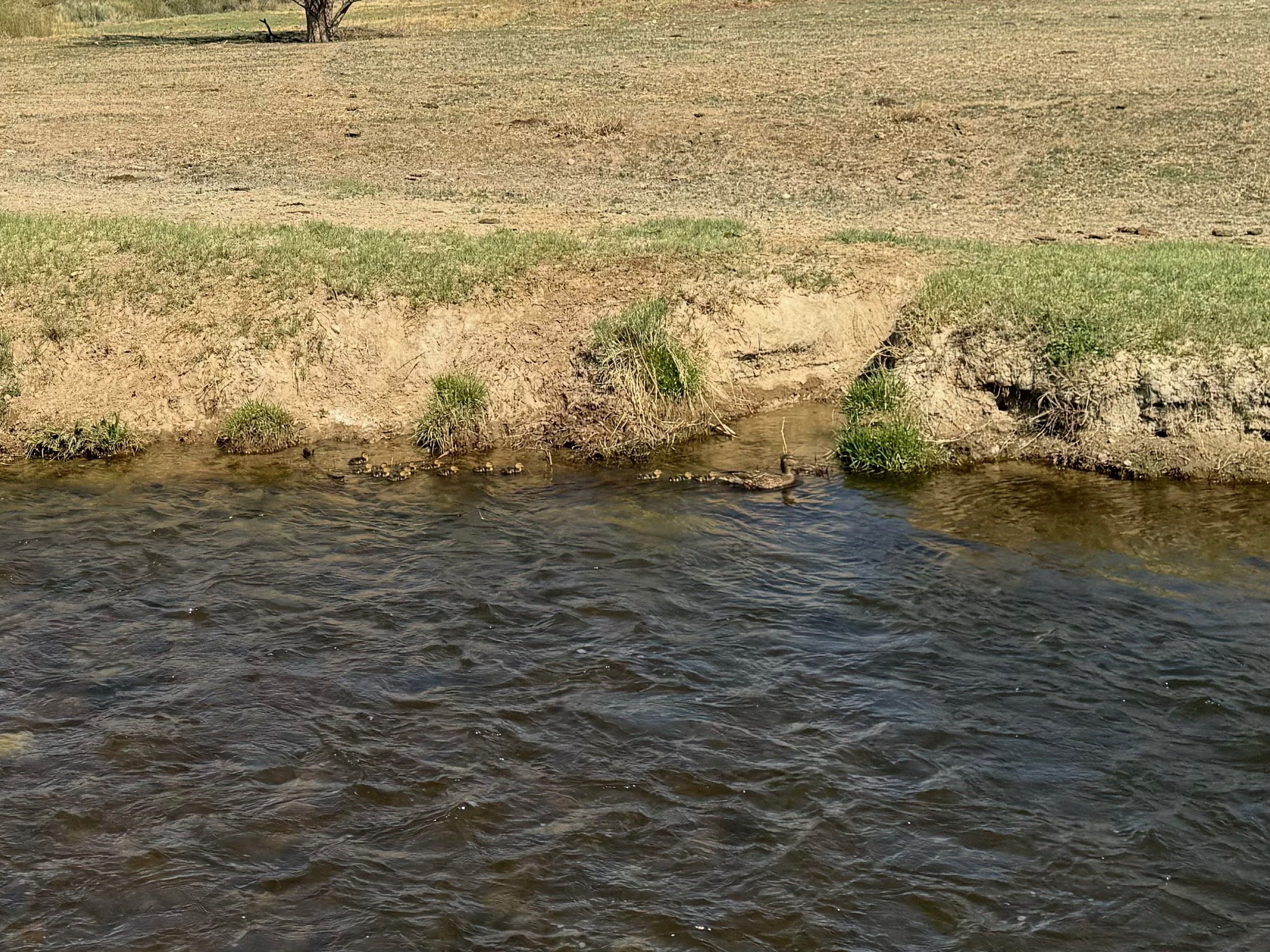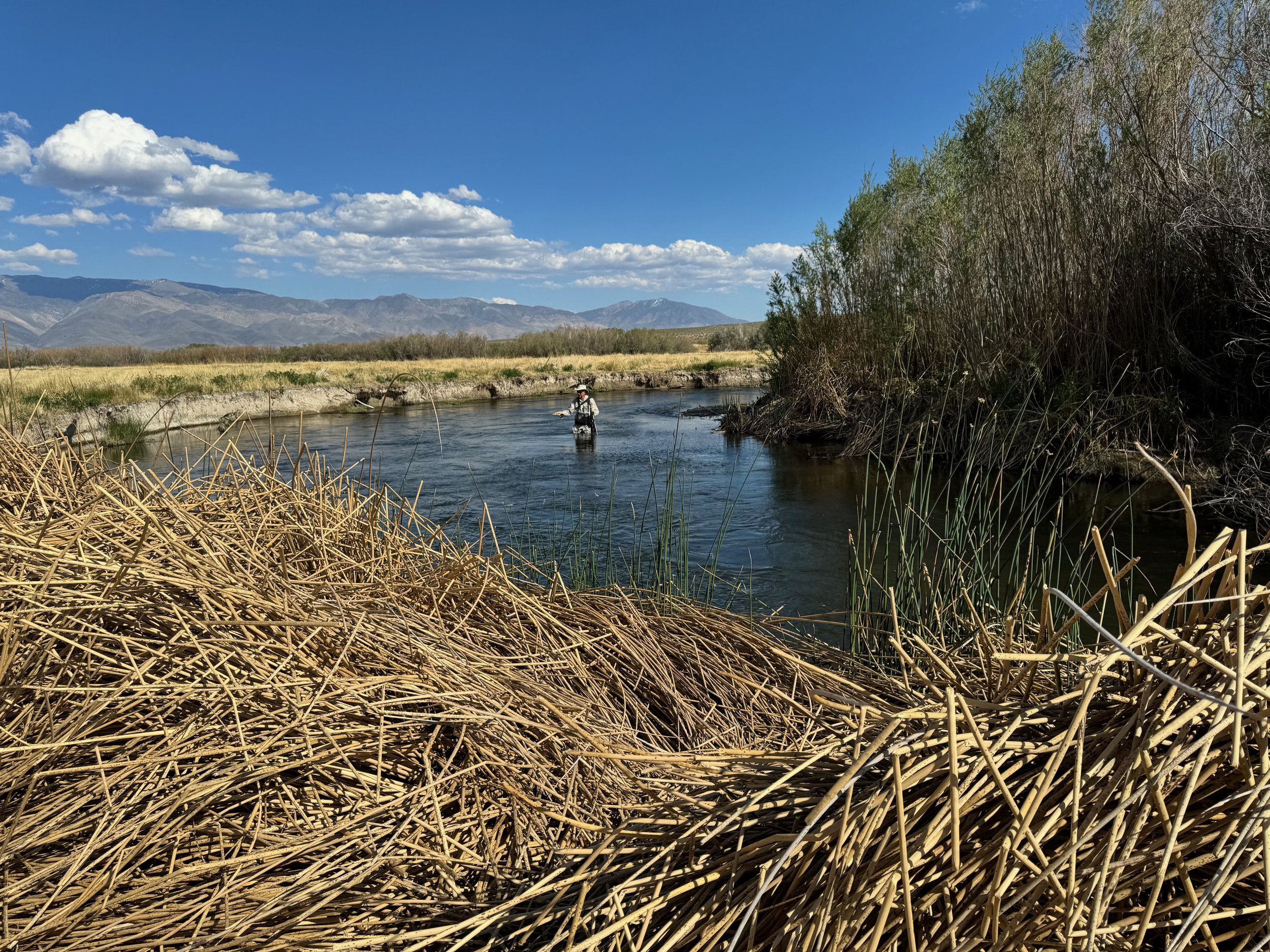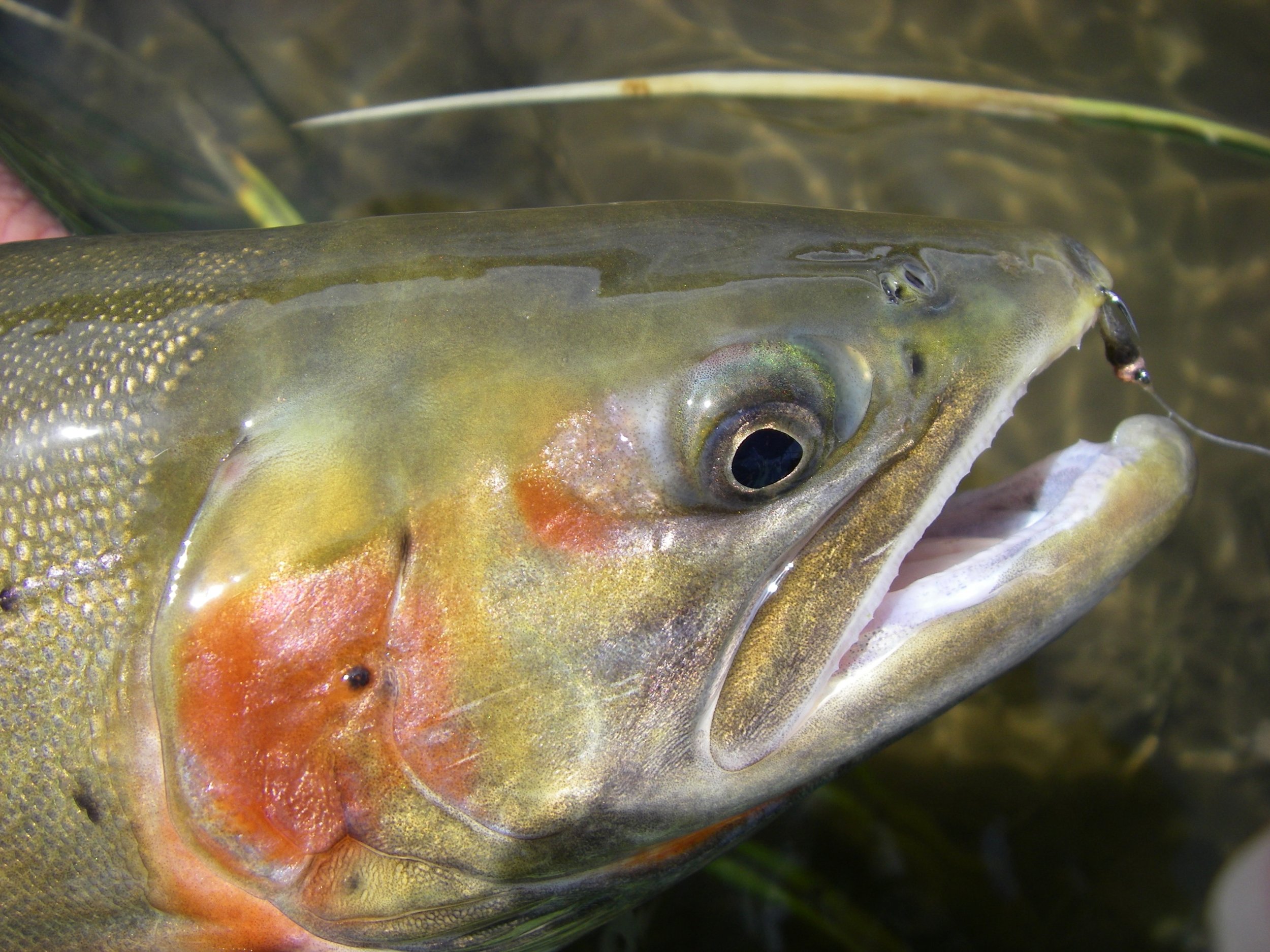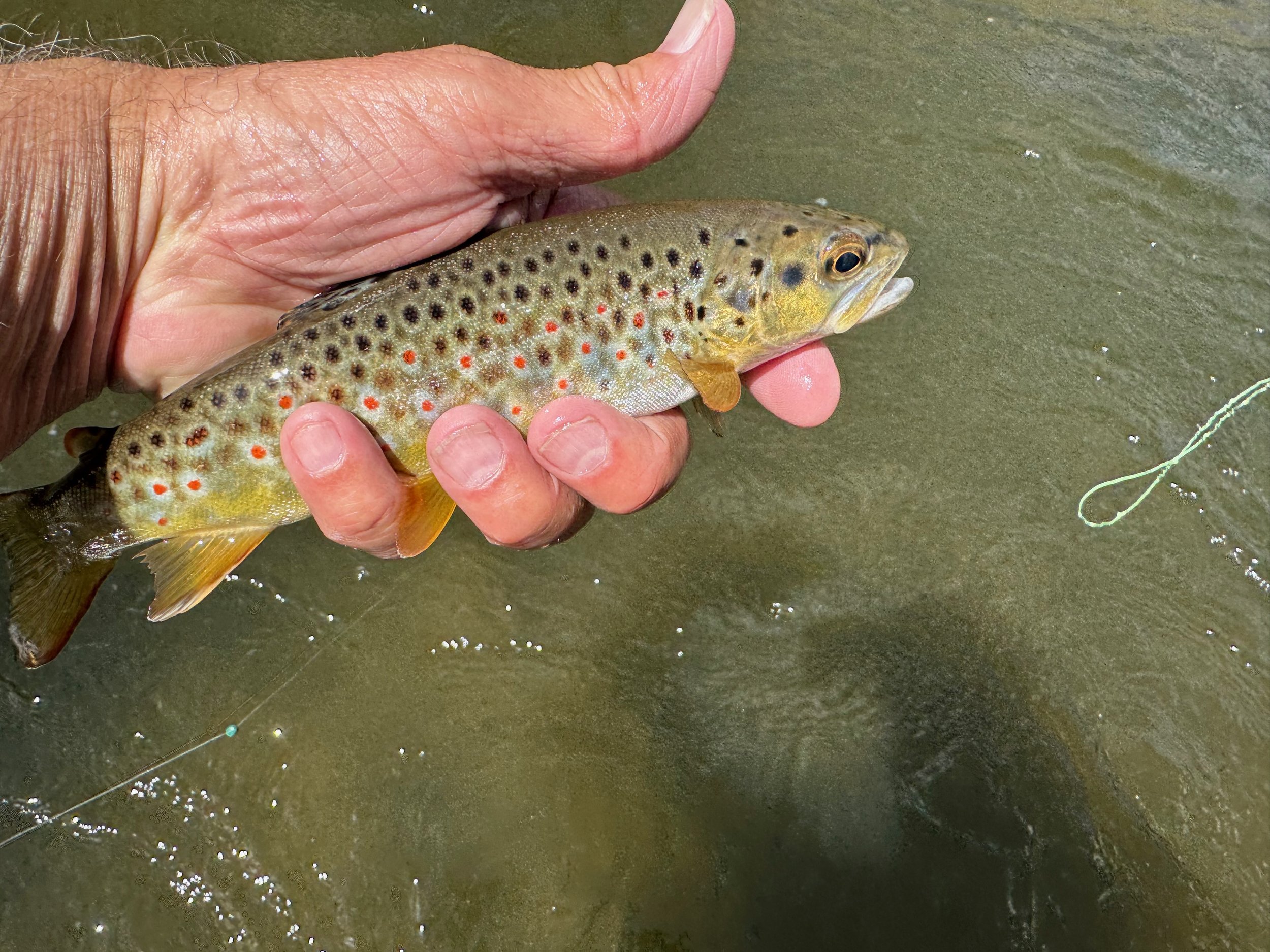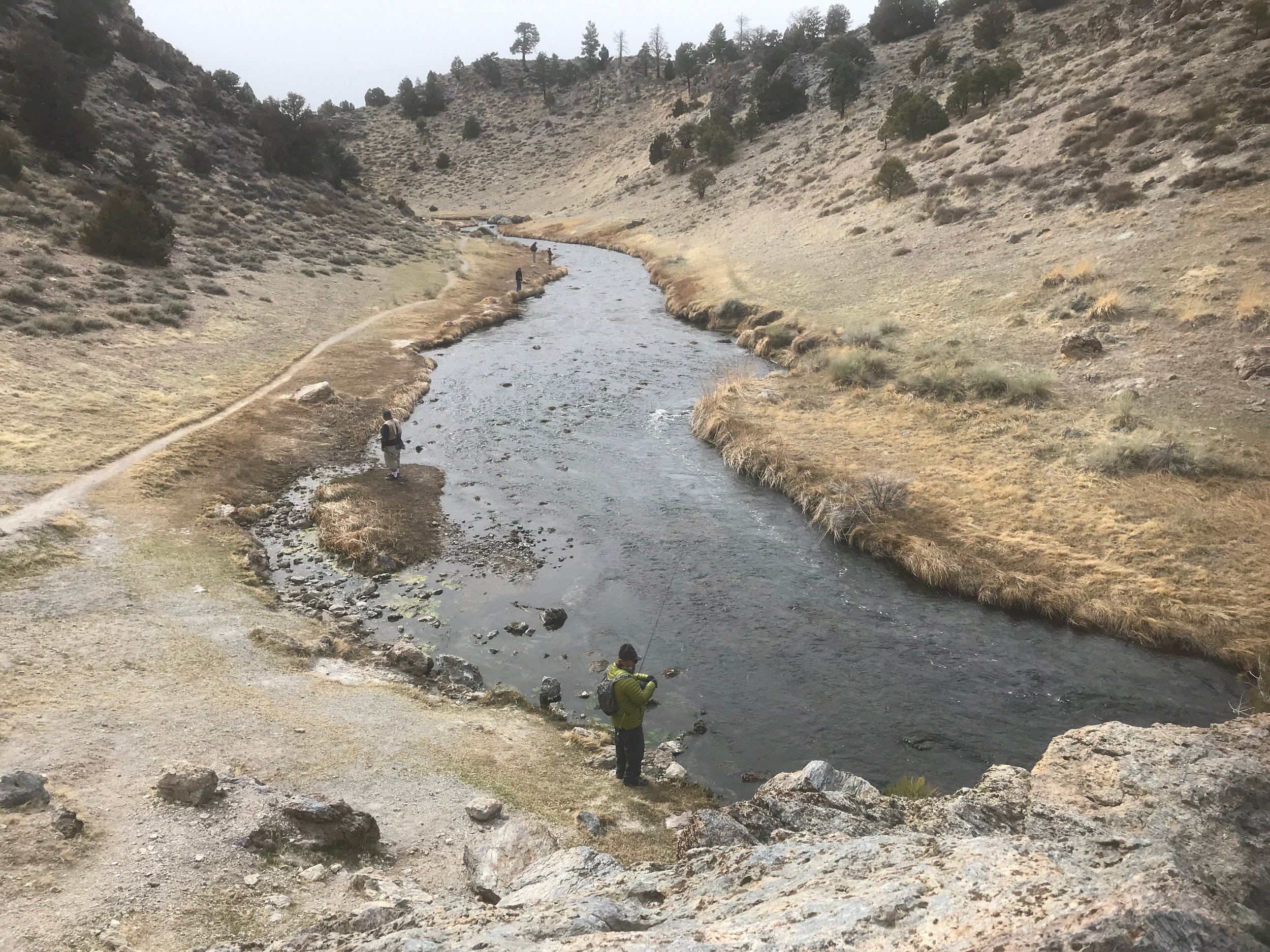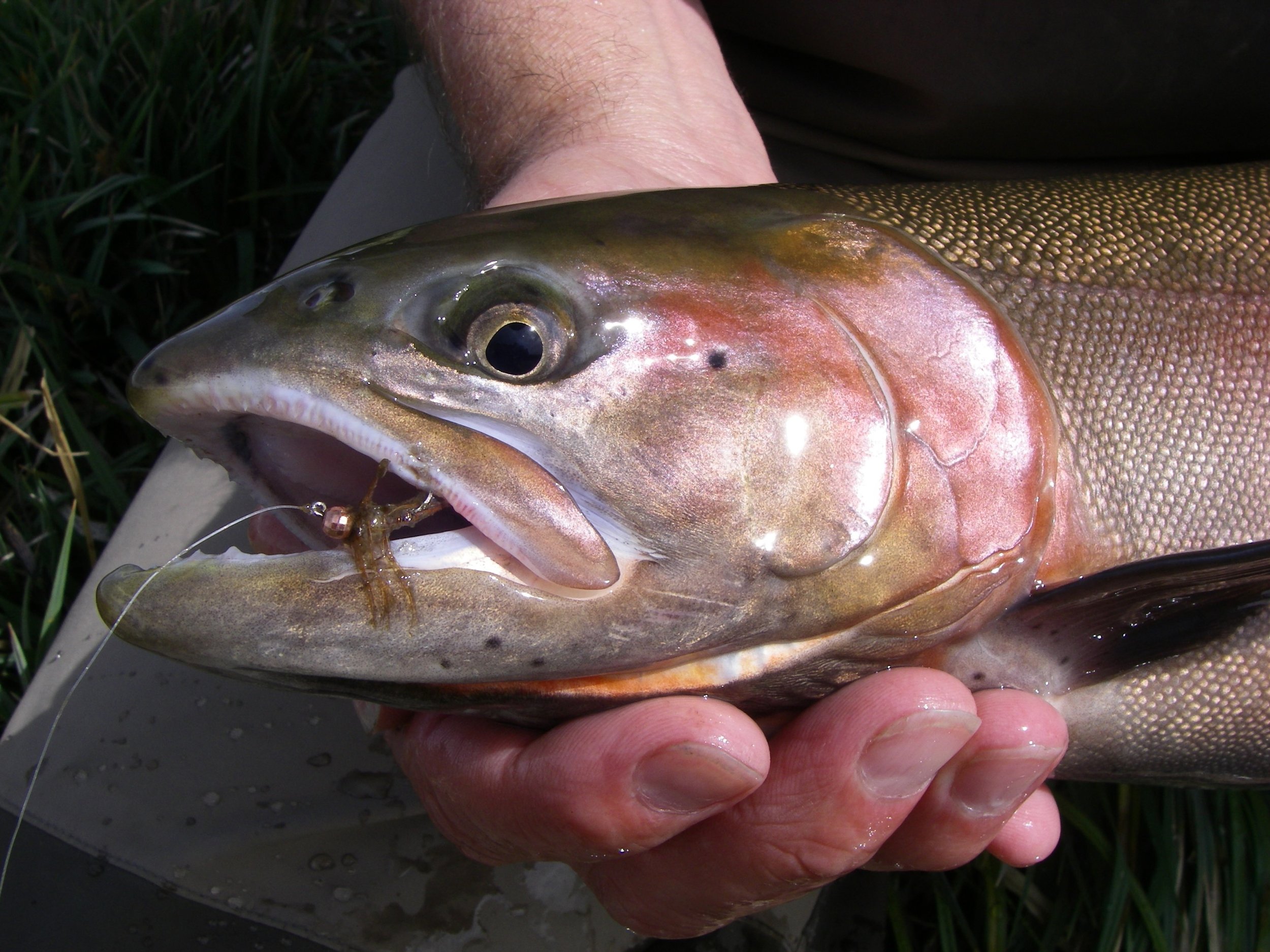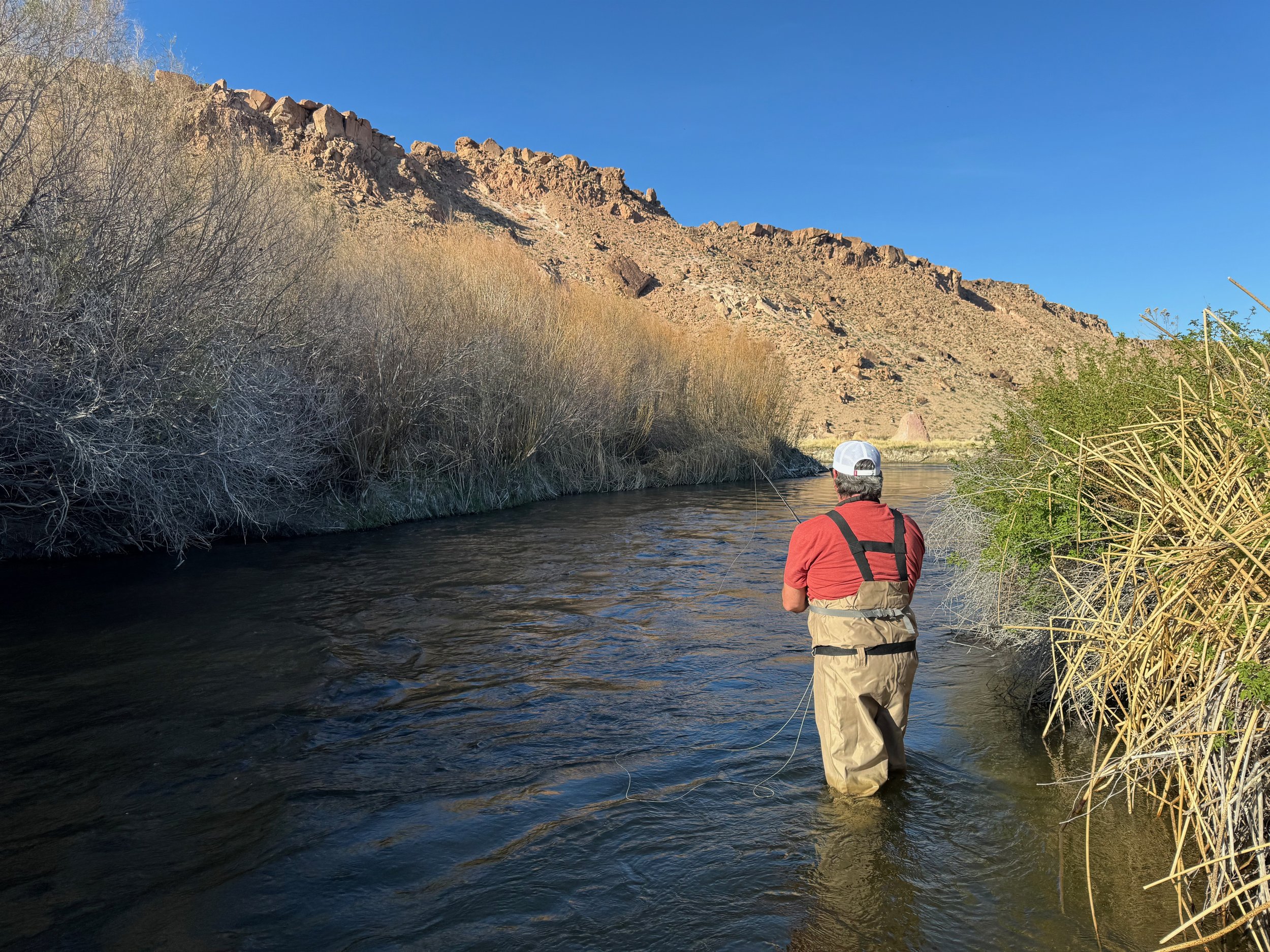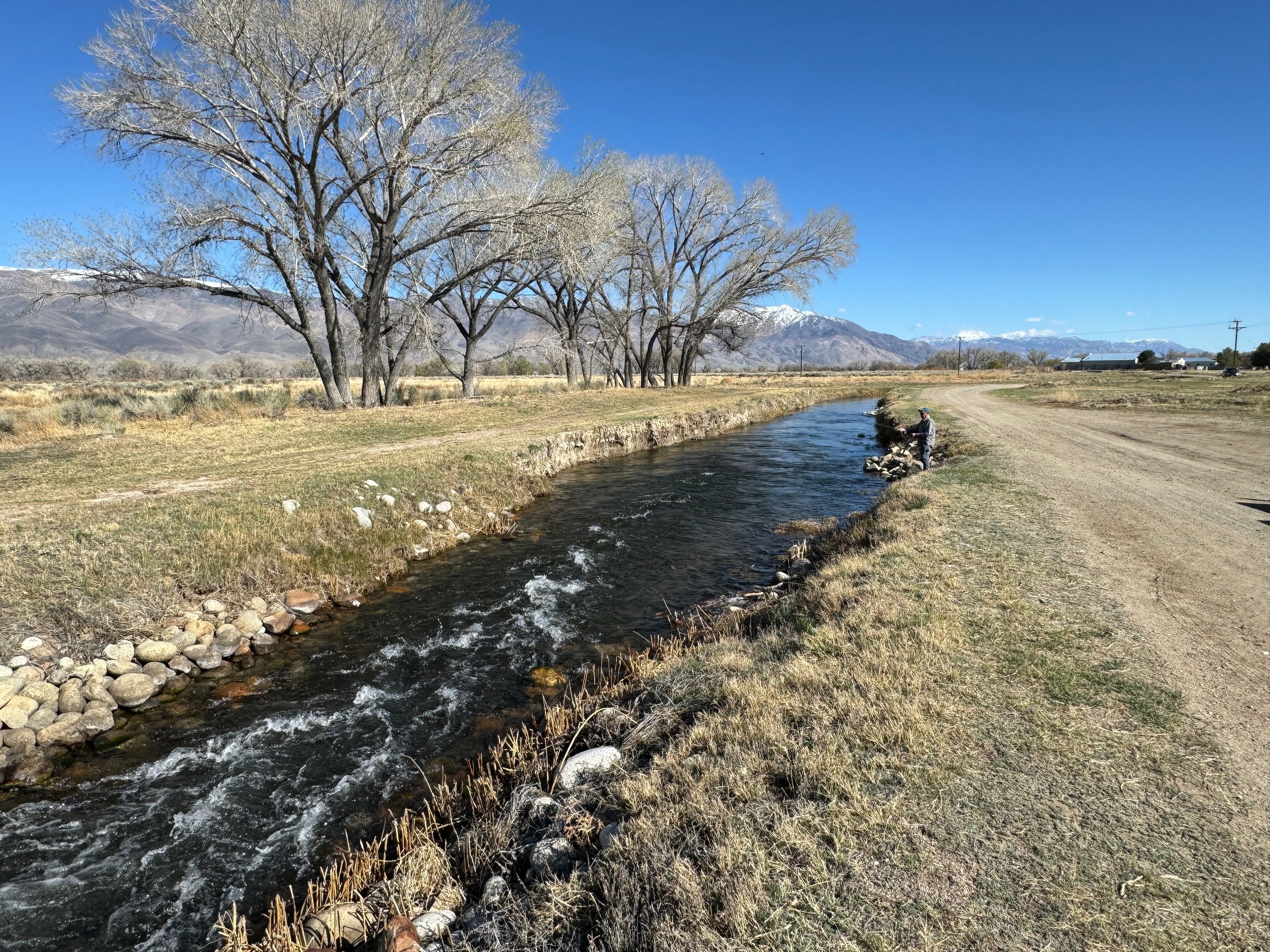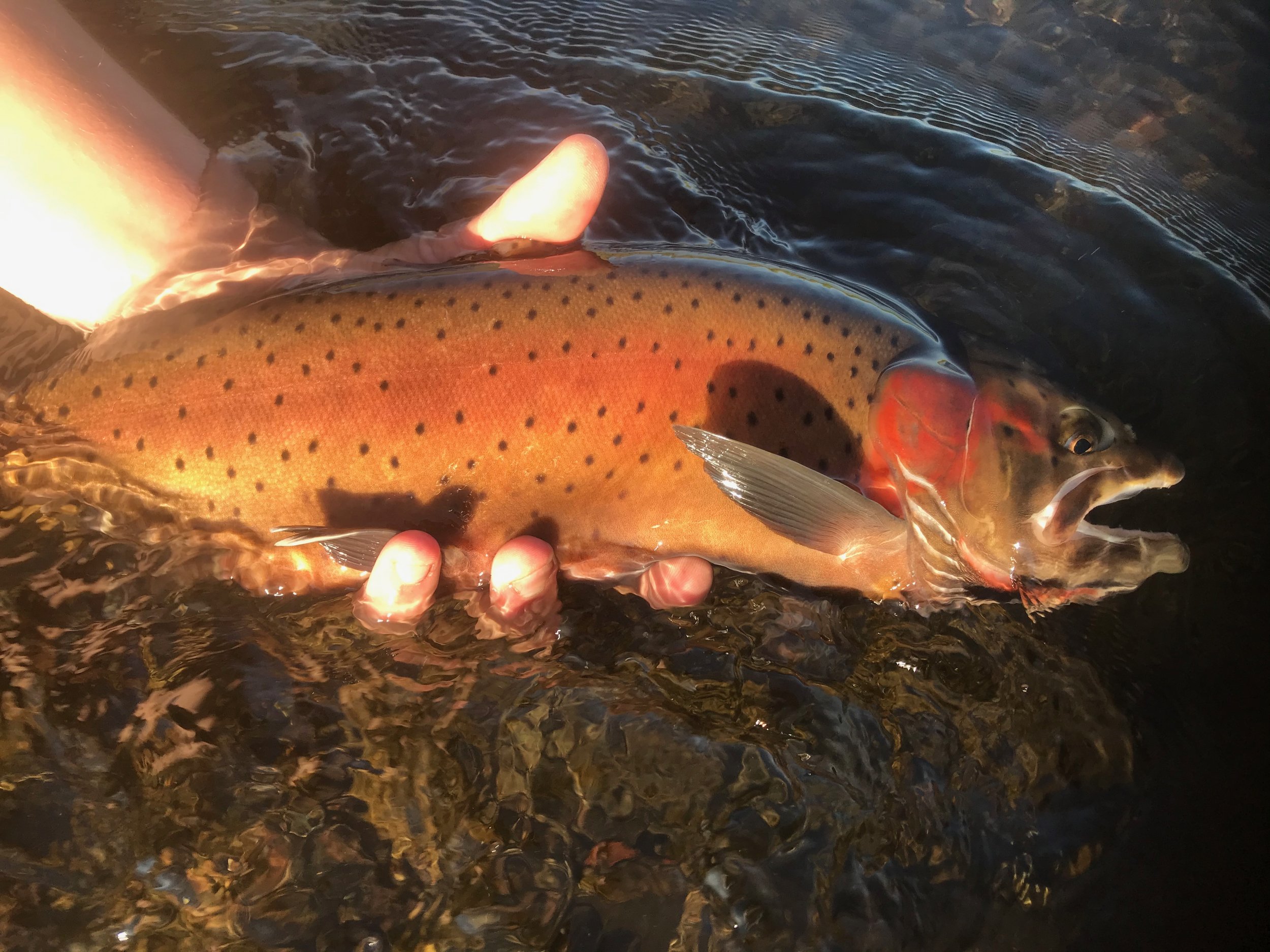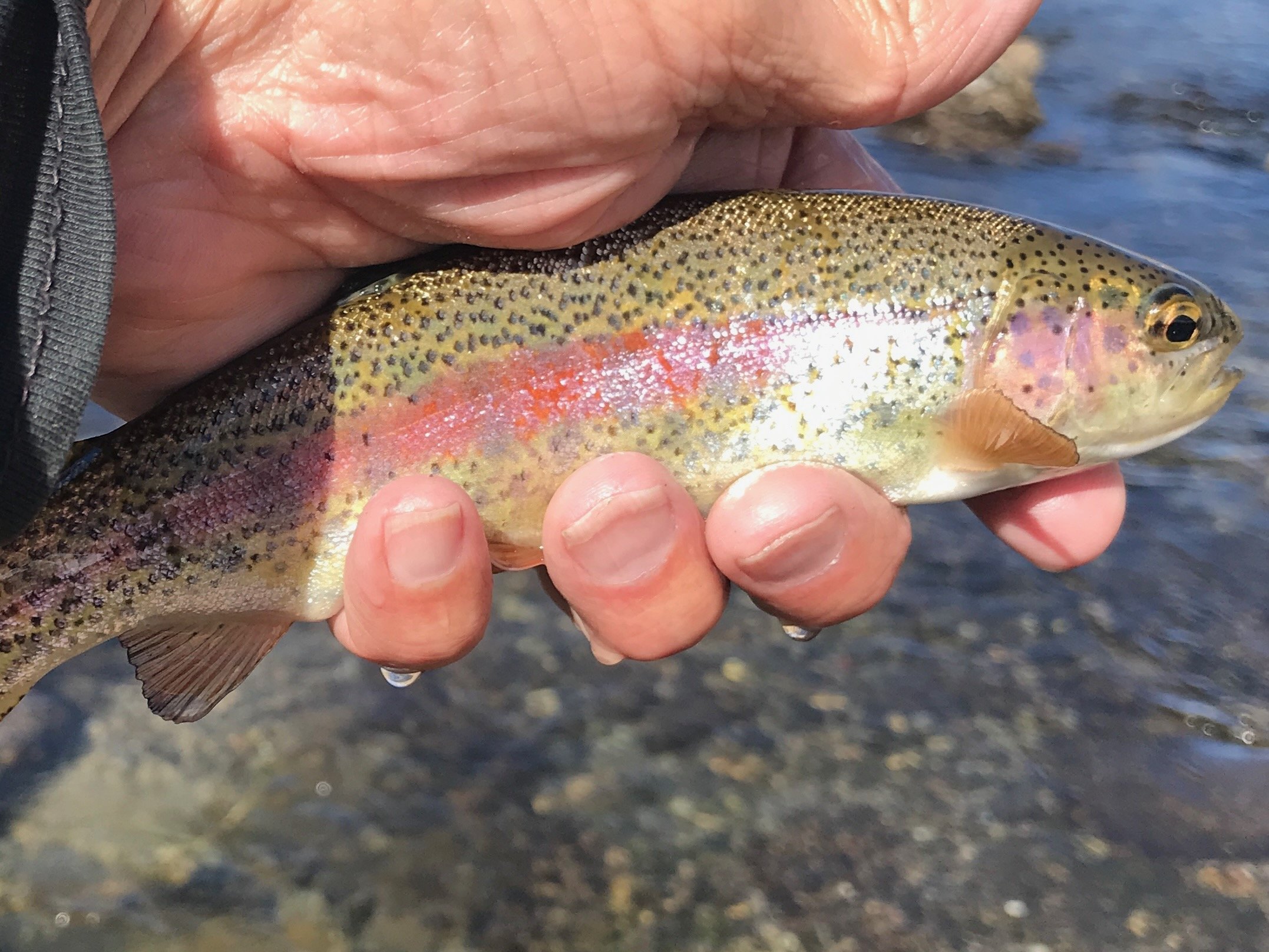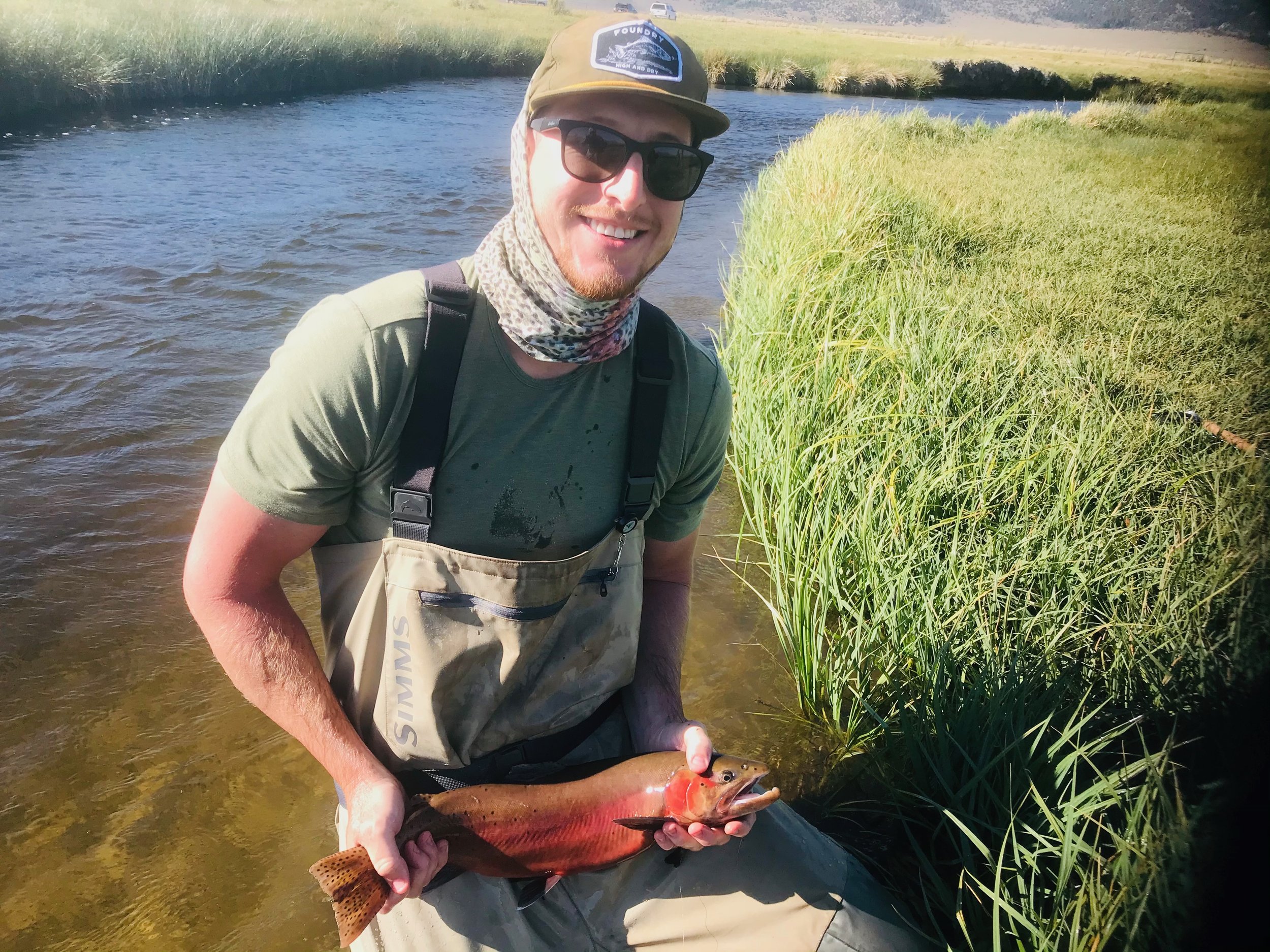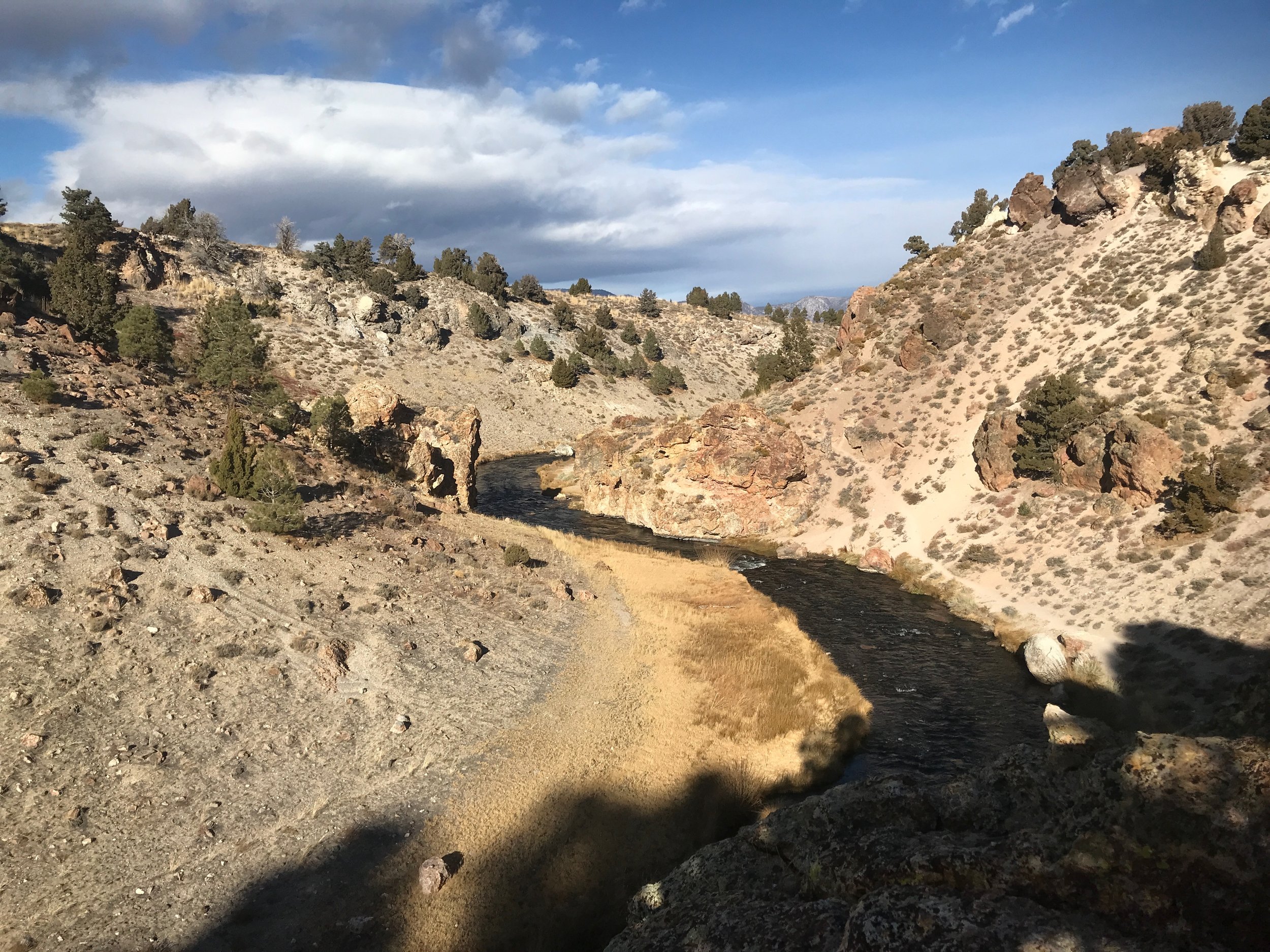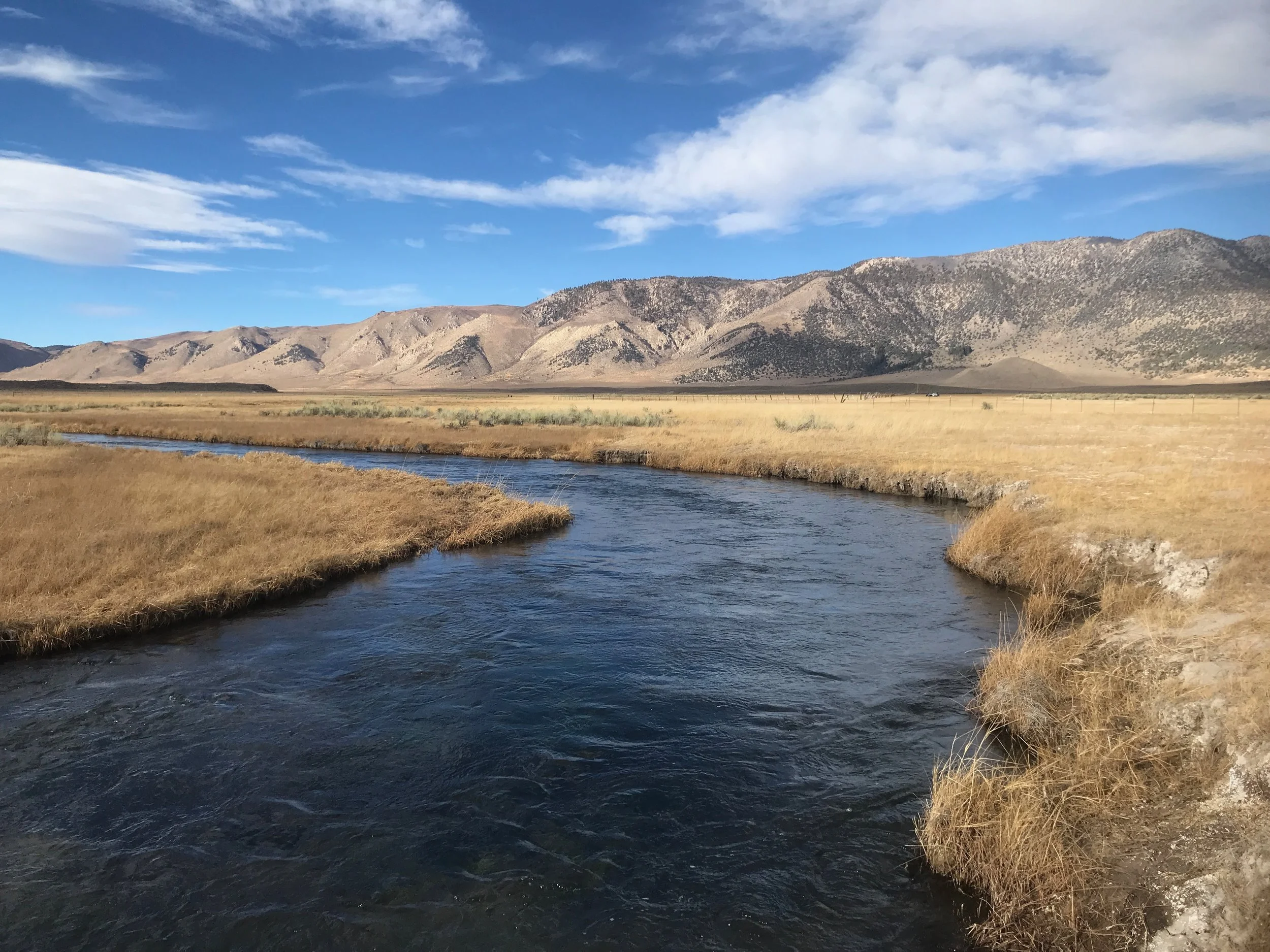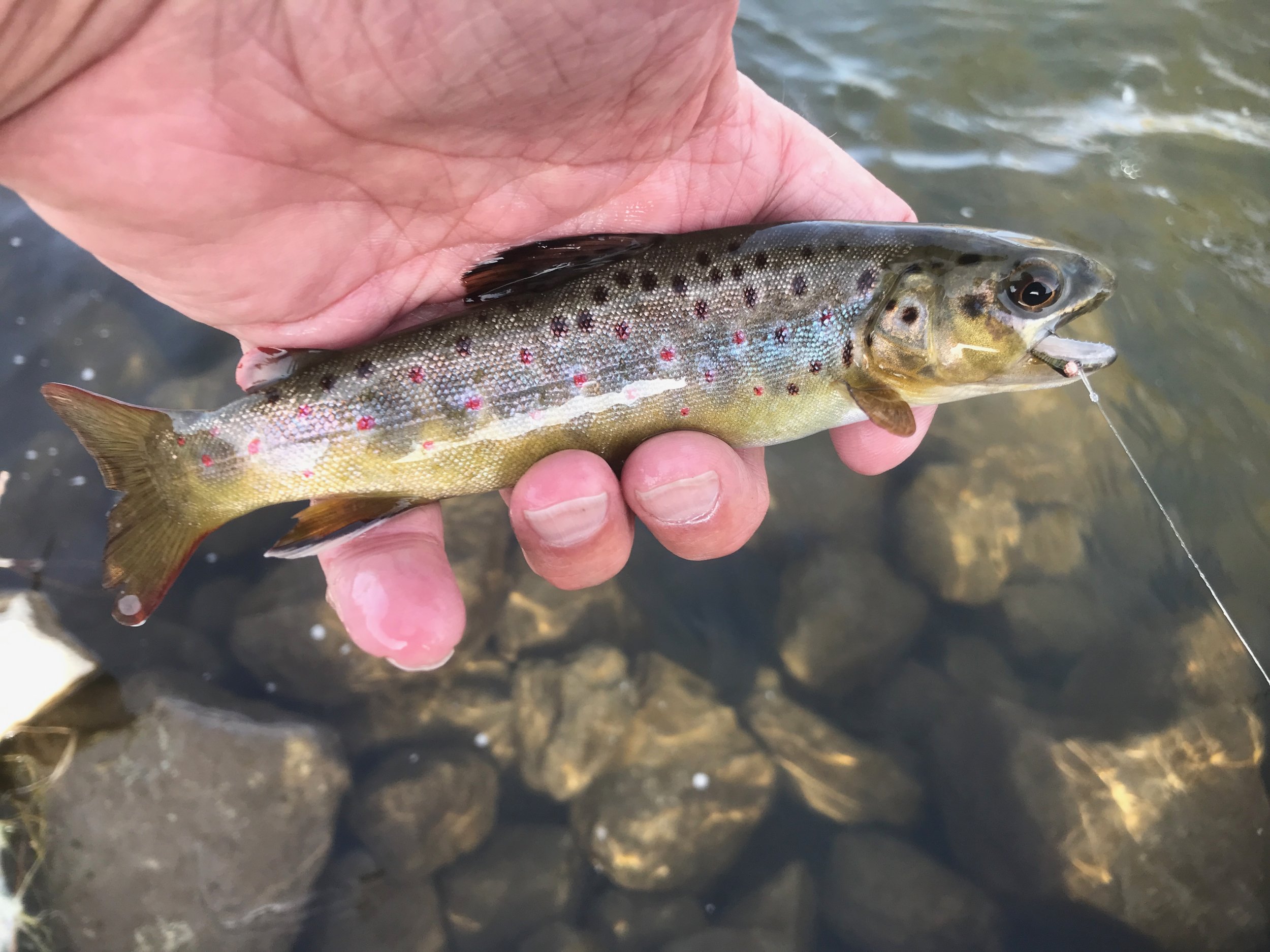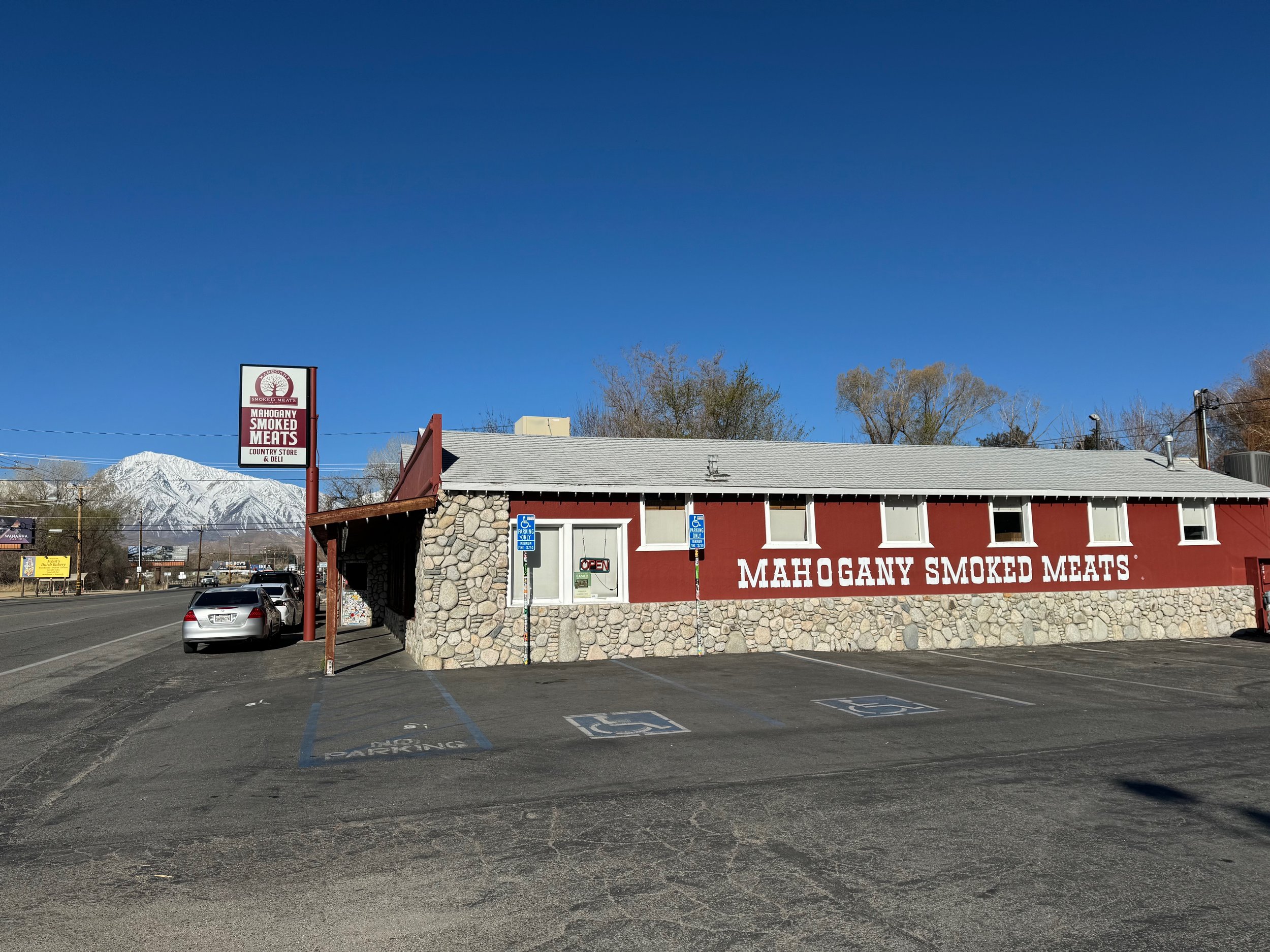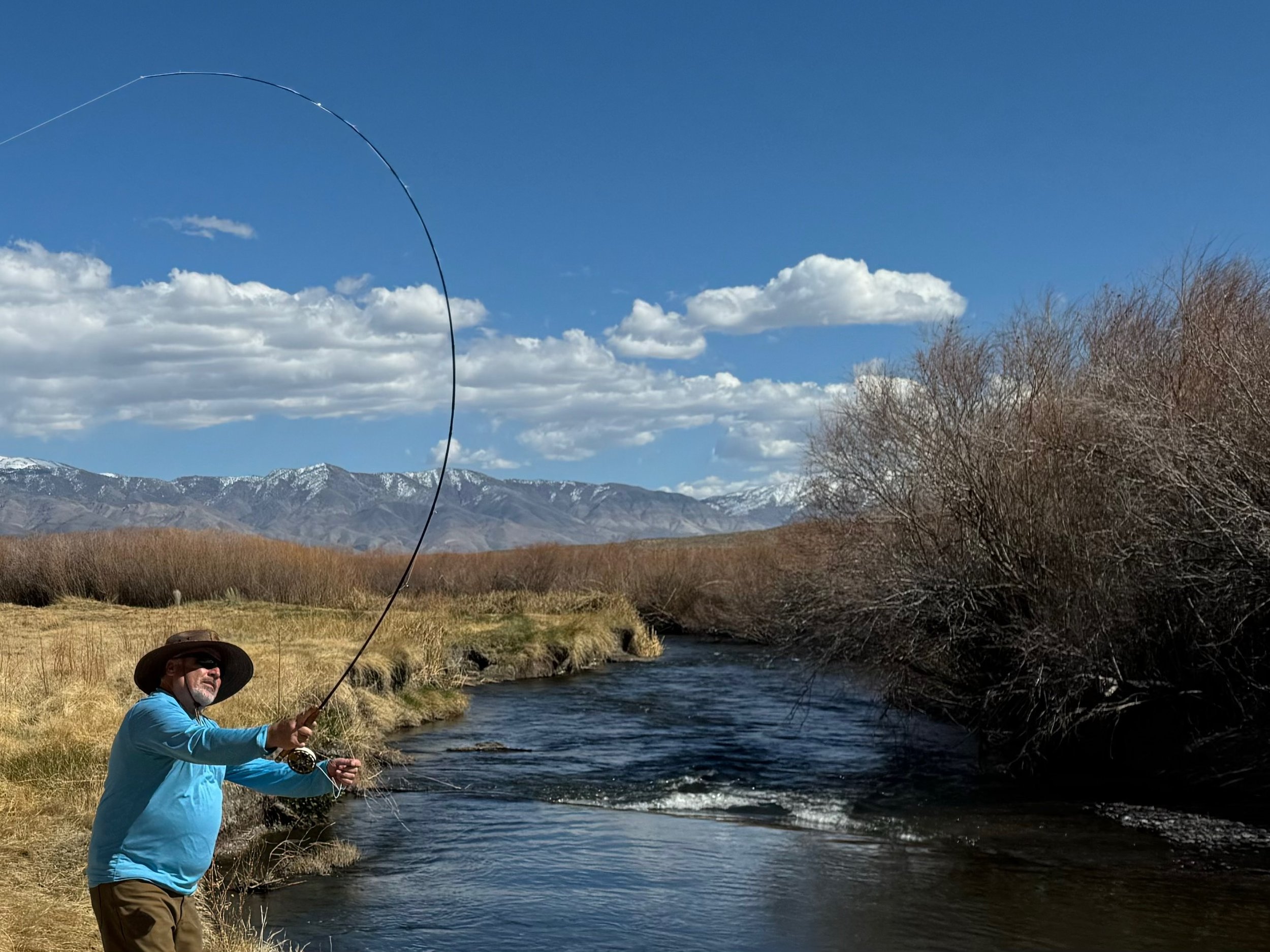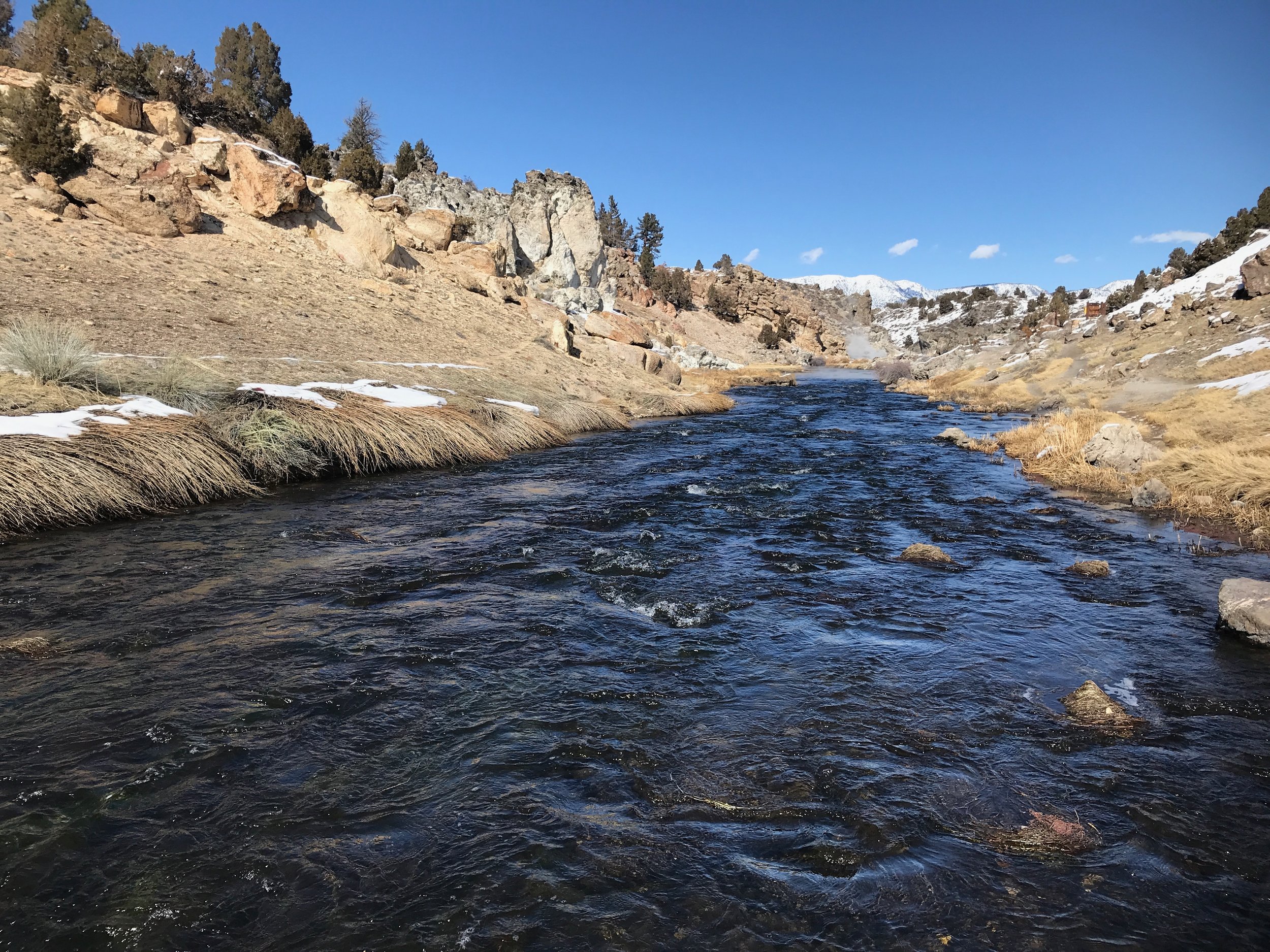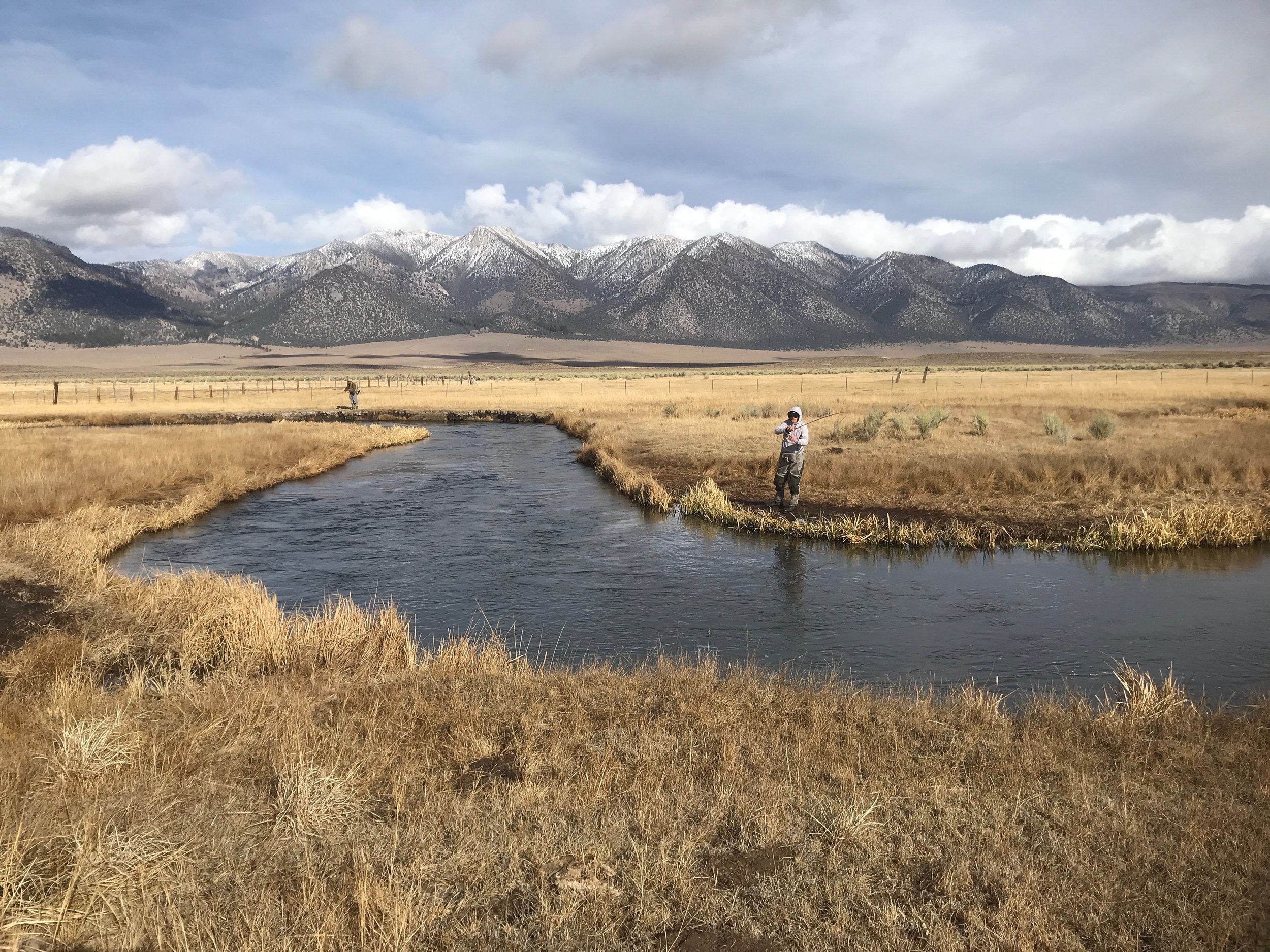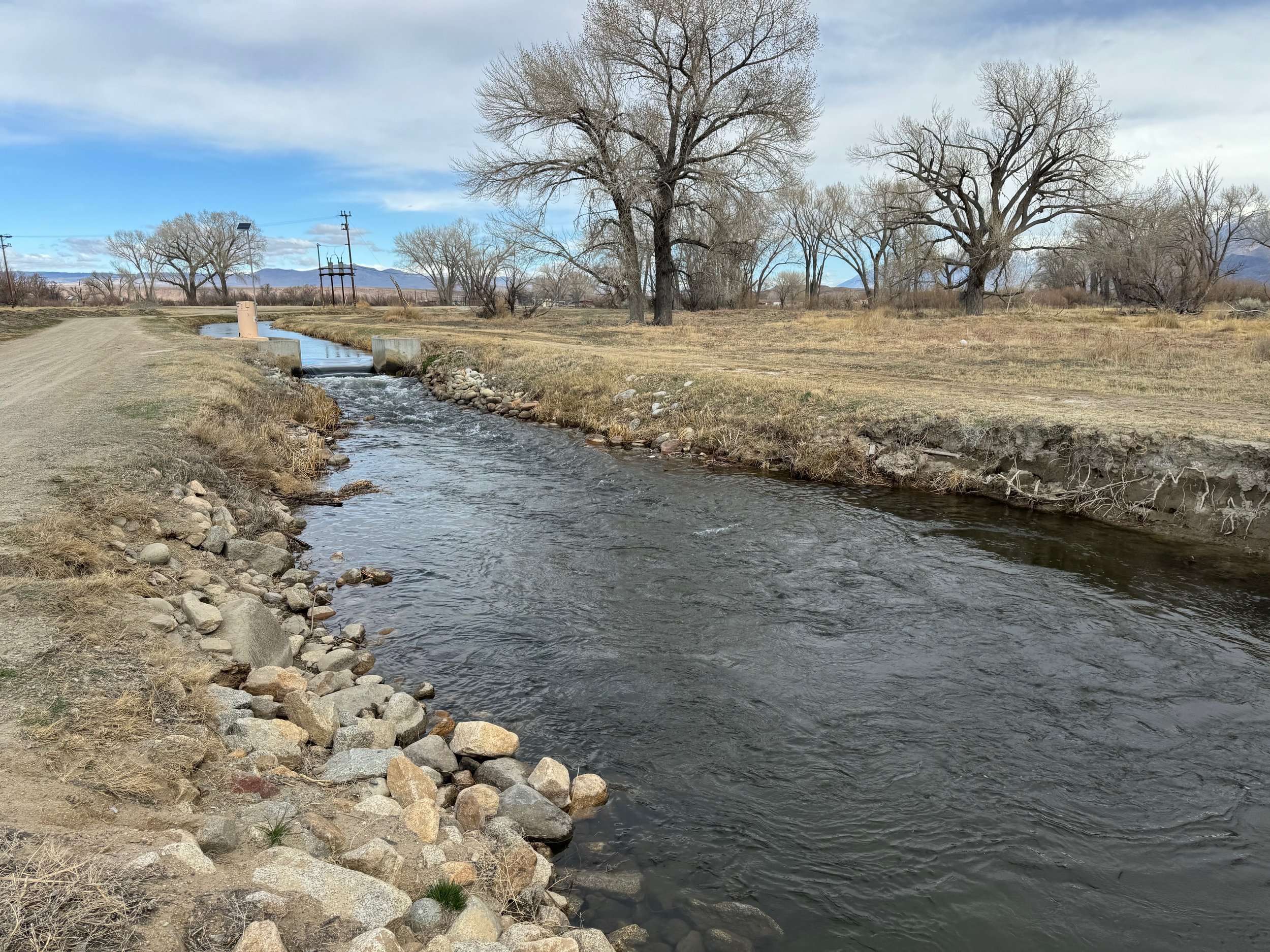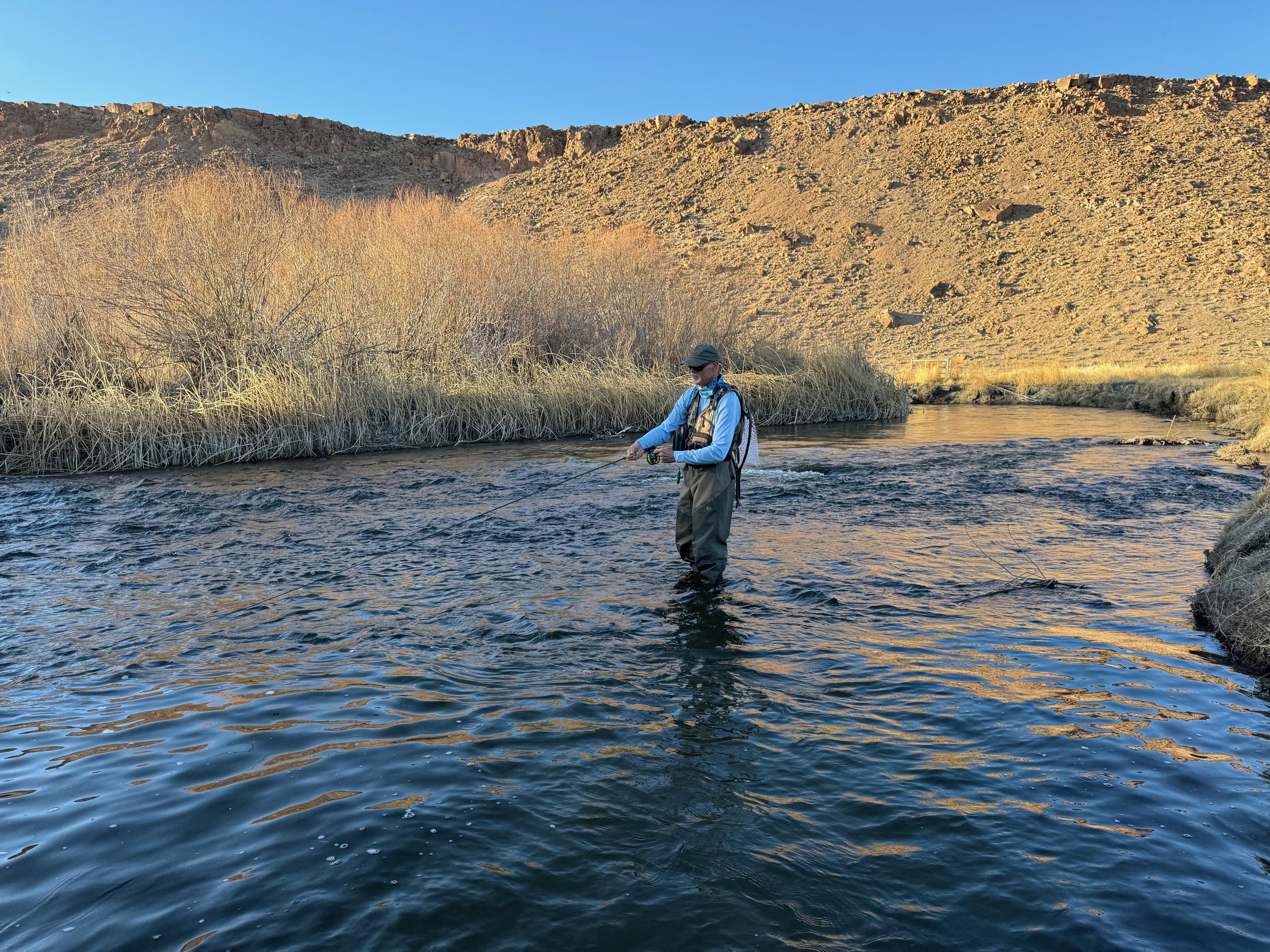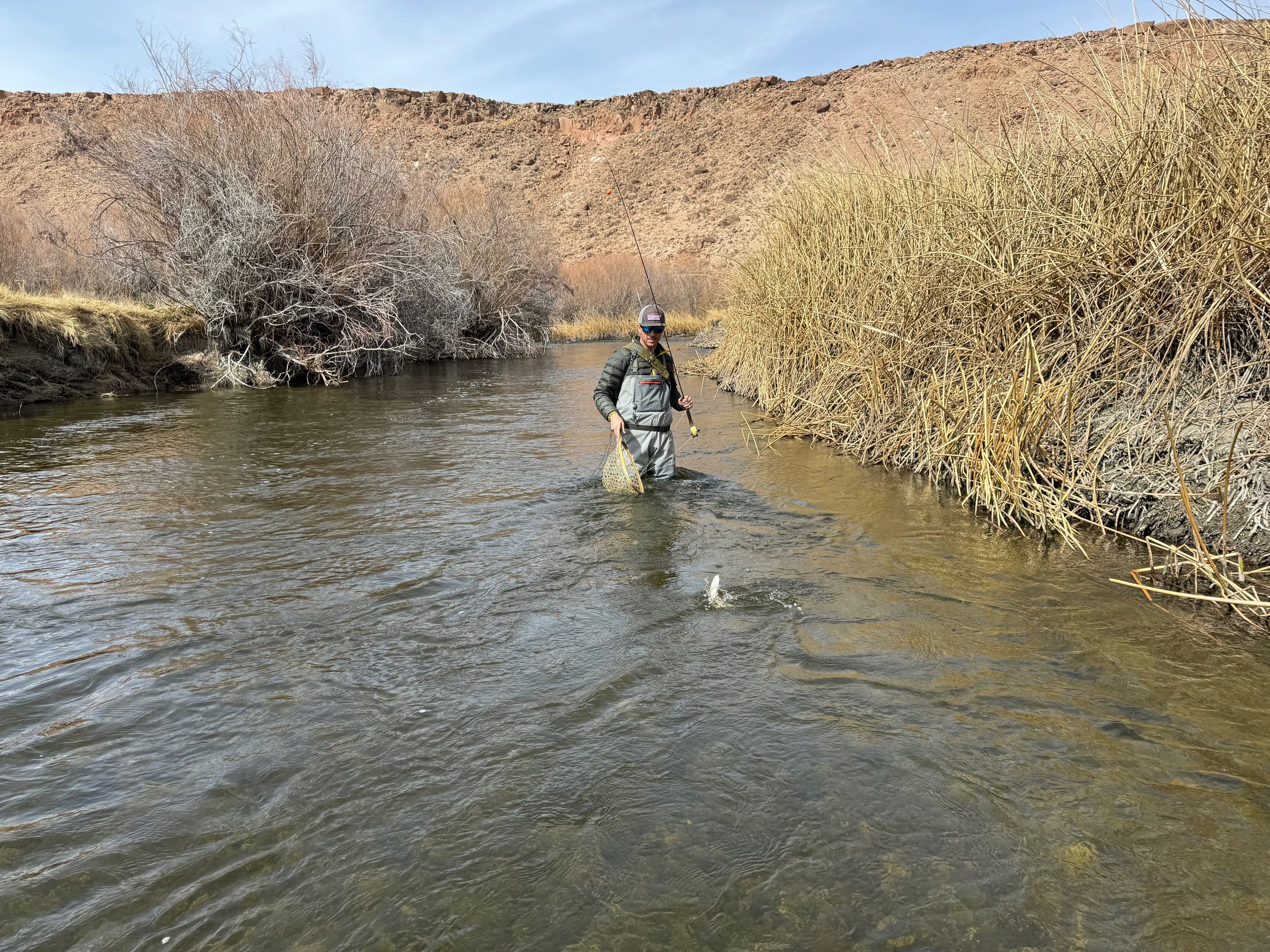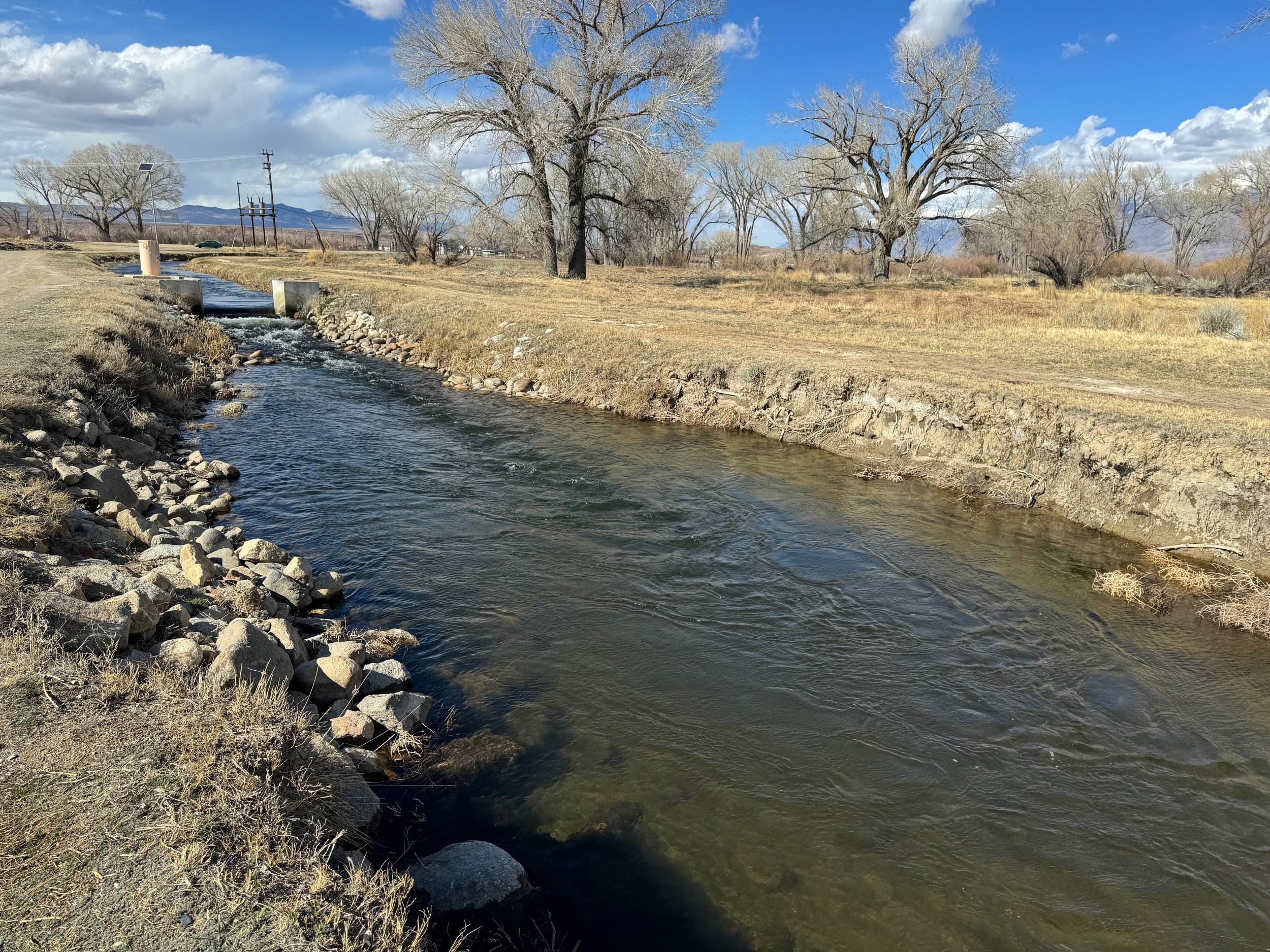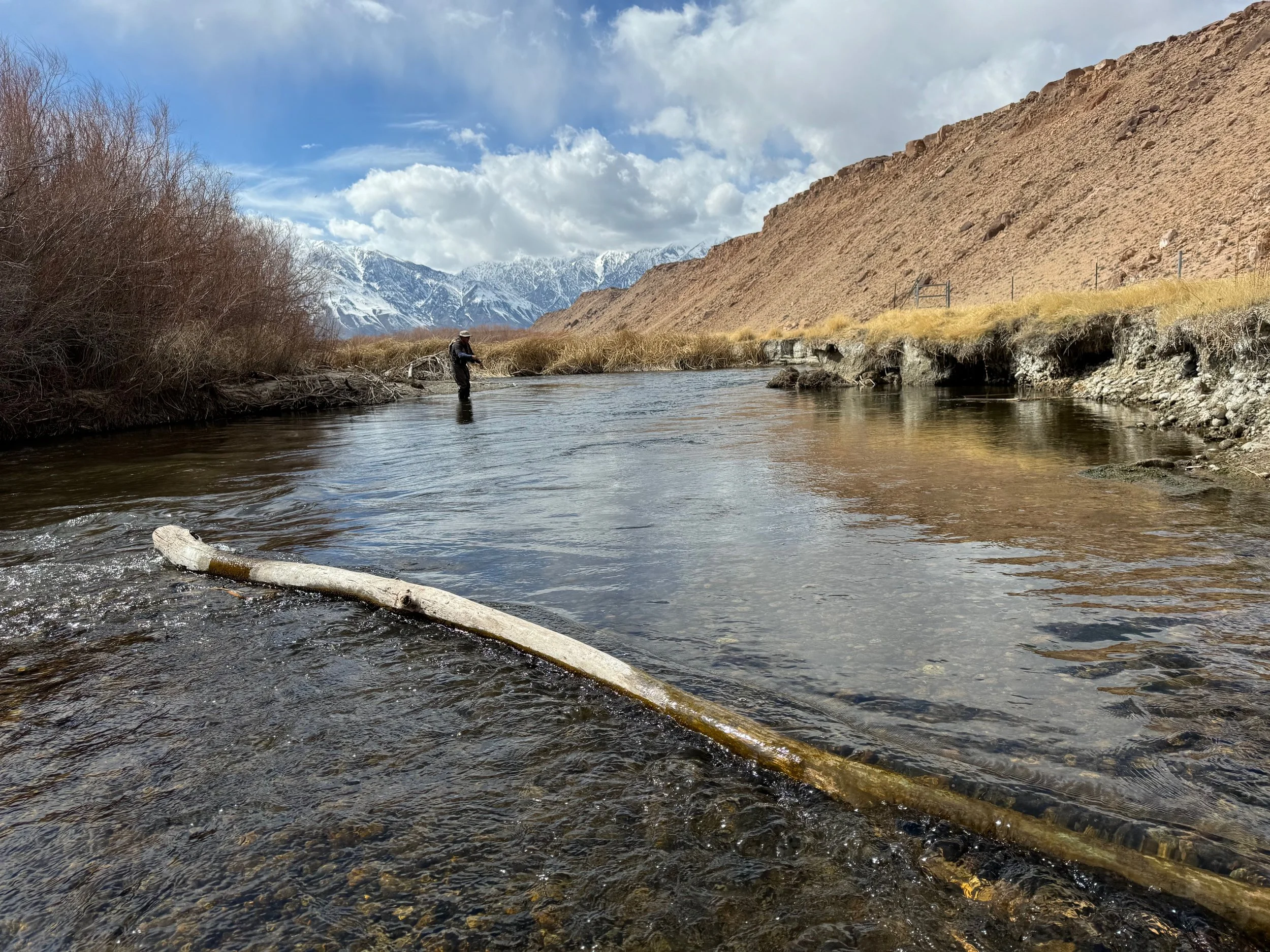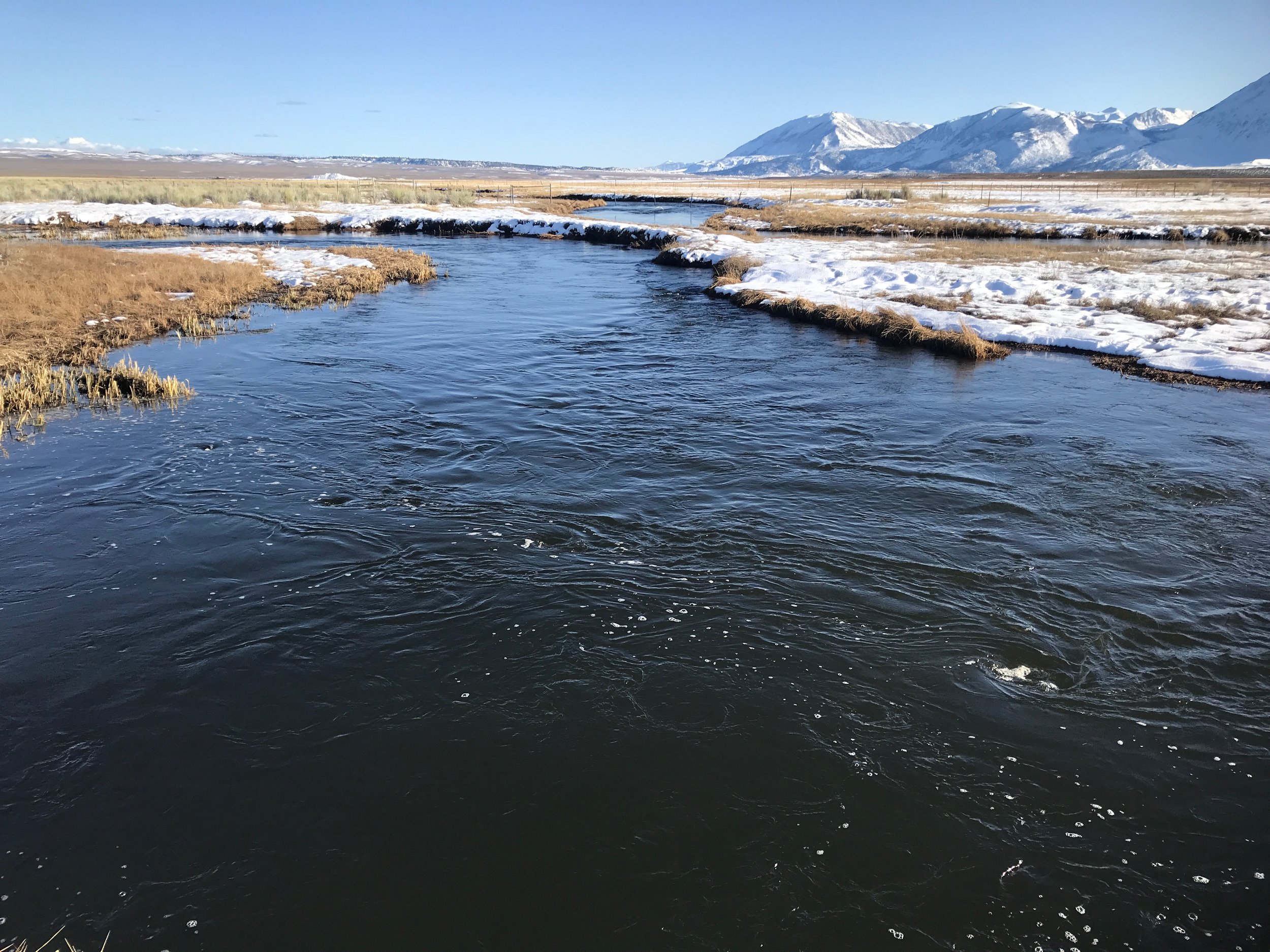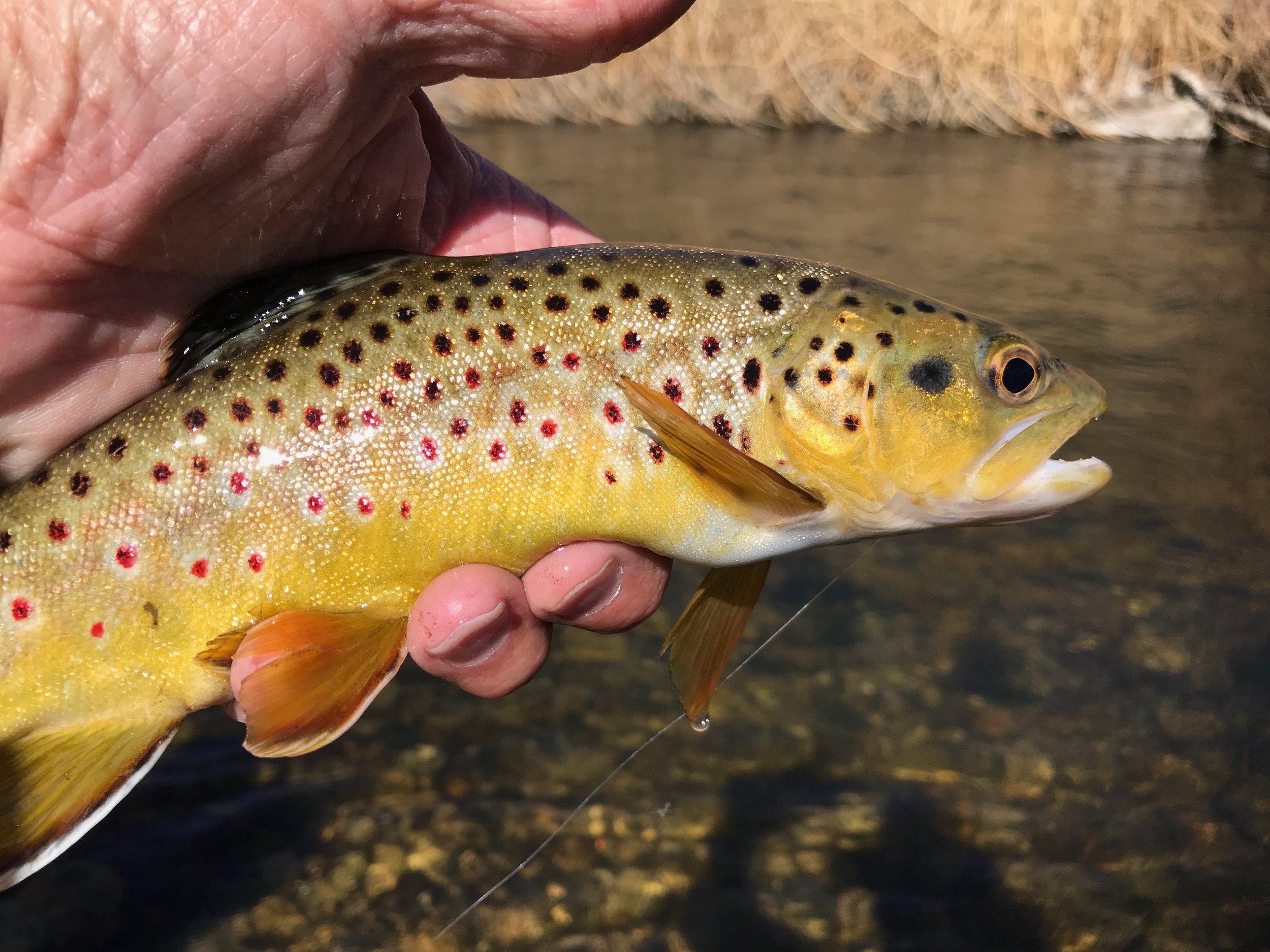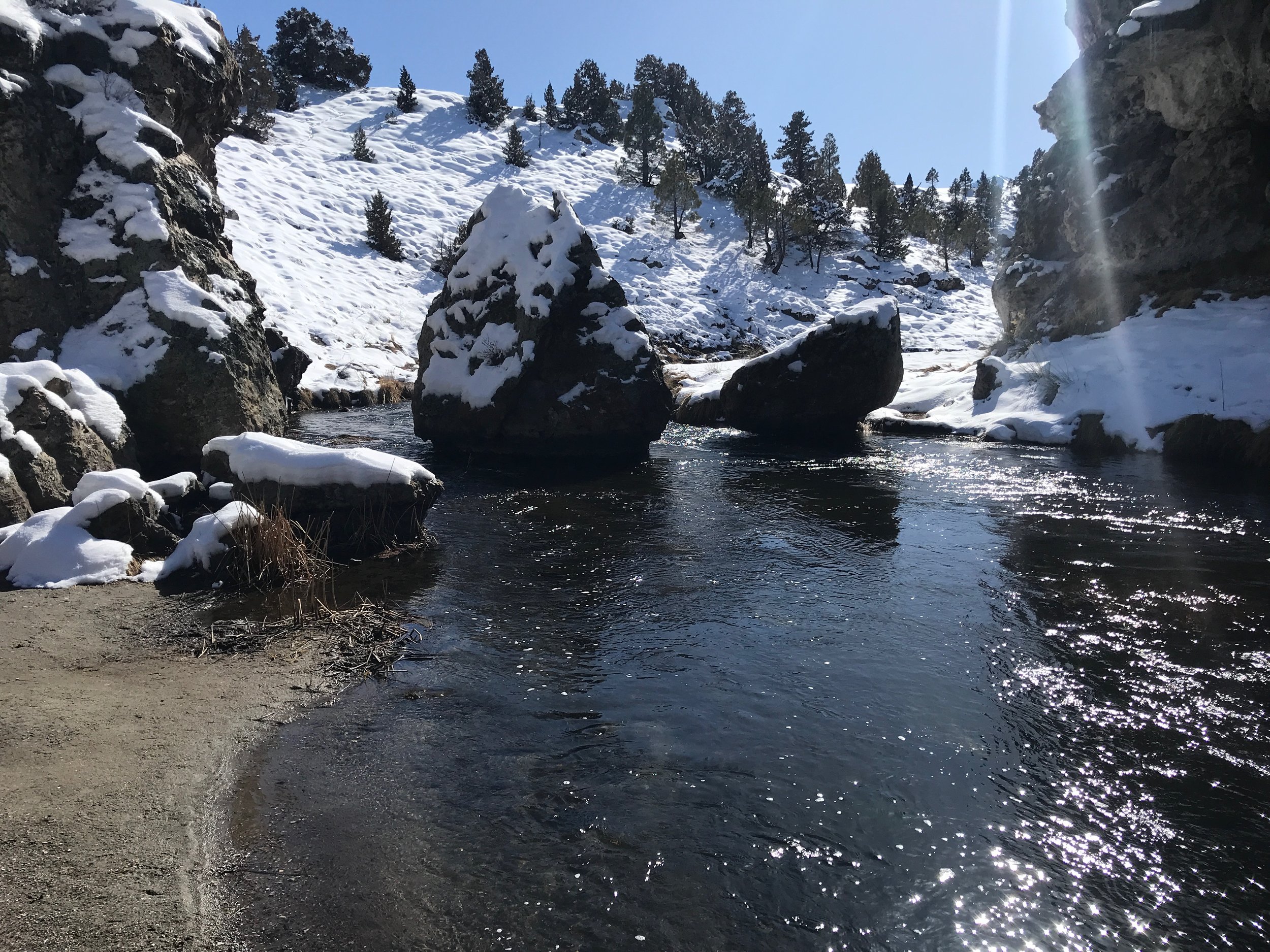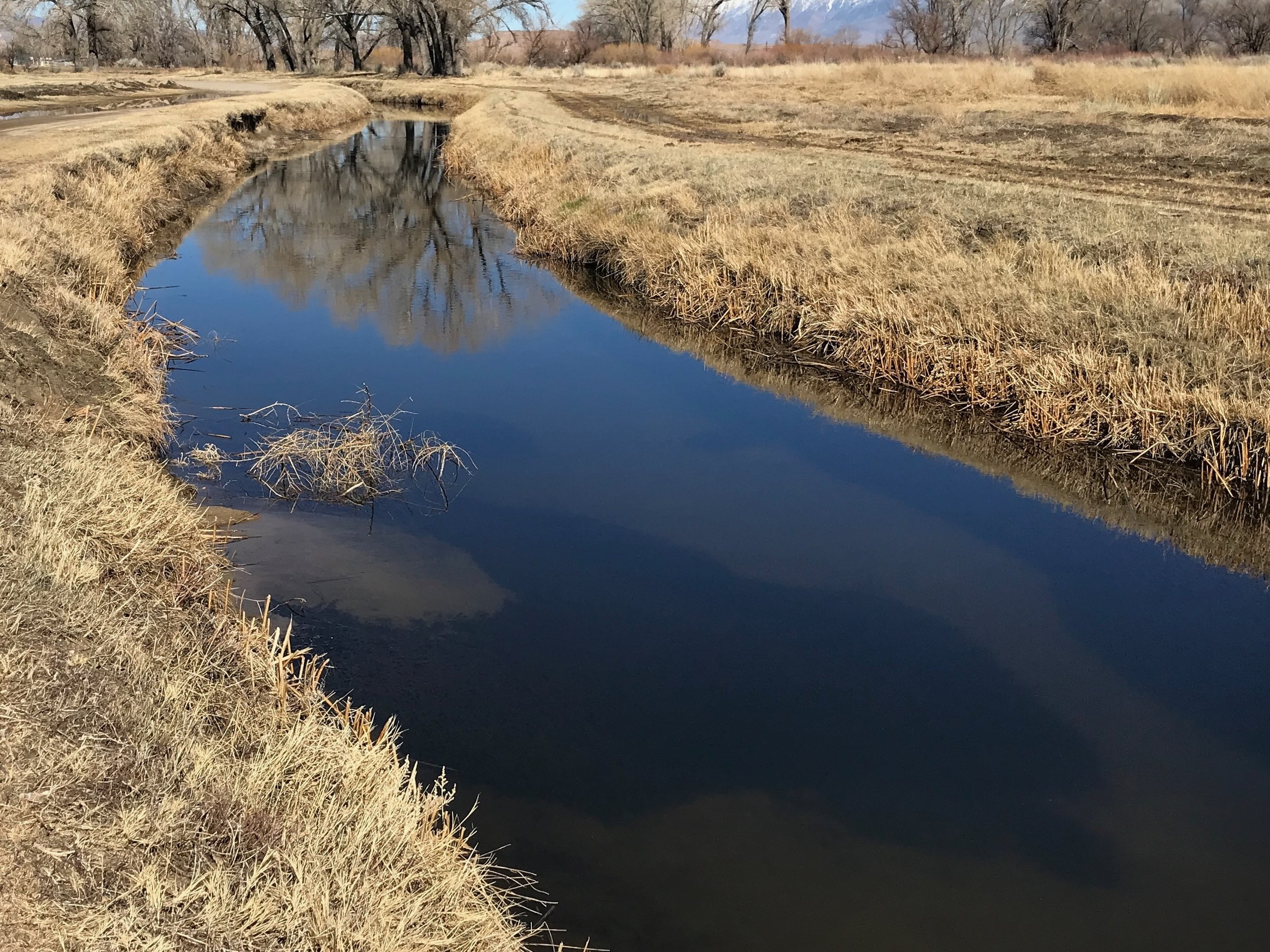Days are warming up as spring is moving towards summer. Wind is the nemesis of fly fishers and spring in the Eastern Sierra is full of wind. Mornings are the time to be on the waters of the Eastern Sierra as the wind comes up every afternoon. An increase in insect activity is causing an increase in trout feeding. Nymphs continue to be the most successful way for fly fishers to catch trout. Dry fly activity has been sporadic, but will increase as spring approaches summer. Midges, mayflies and caddis are the insects the trout are feeding on.
Nineteen six to 12 year old’s attended the 13th annual Kid’s Fish Camp at Bishop Park on Opening weekend.
Lower Owens River
Wild Trout Section:
Flows have increased to 525 CFS and are anticipated to increase to over 600 CFS. So for now no fly fishing on the lower Owens River until the flows decrease to under 300 CFS. I’m hoping it will drop in mid-summer, but am anticipating it dropping in October.
Knowing that the river was going up from the 175 CFS I got one last afternoon of Euro nymphing on the wild trout section of the lower Owens River.
Owens River Gorge
Upper Gorge Power Plant:
With the lower Owens River flows above safe wading it’s time to turn to the Owens River Gorge. I will fish the gorge through May. By June the walk out of the gorge is too hot, the stinging nettles are in full growth and there are rattle snakes that need to be avoided. The gorge is a tail water fishery that fishes opportunistically. A dry and dropper is the method to fish in the gorge. On the surface fish with a blue wing olive parachute, Adams parachute, mini Chernobyl ant or stimulator. For the nymphs fish with tiger midges, zebra midges, bead head flash back gold ribbed hare’s ears and bead head flash back pheasant tail nymphs. I fish my nymph on three feet of 5X fluorocarbon.
Sierra Bright Dot Guide Richard Lancaster getting ready to net Luong Tam’s, from Tekara Tunki , wild brown trout that took a dry fly.
Hot Creek
Interpretive Site:
Windy afternoons make mornings the perfect time to be on the creek. The trout are not coming to the surface for the few hatching insects. Nymphing under a dry fly is a successful approach. The dry fly lands on the water softer than an indicator and does not spook trout. For the dry fly use something that floats well like a stimulator, micro Chernobyl ant or Adams parachute and is highly visible. For nymphs use olive quilldigons, bead head flash back pheasant tail nymphs, Frenchie’s, blue perdigons, tiger midges and zebra midges.
Earl Slack showing the success of learning how to fish a dry and dropper rig in the canyon section of Hot Creek.
Hot Creek
Canyon Section:
With a steeper gradient in the canyon than the Interpretive site the trout feed more reactionary than selectively making the fish in the canyon a bit easier to catch. A dry and dropper is the perfect technique to fly fish in the creek. I use three feet of 5X fluorocarbon tied to the bend of the dry fly with a clinch knot. I tie a blue wing olive nymph to the fluorocarbon tippet with a nonslip loop knot. If the fly is not bouncing off the substrate add a split shot. For the dry fly try a stimulator, mini Chernobyl ant, elk hair caddis or Adams Parachute. For the nymphs use olive quilldigons, bead head flash back pheasant tail nymphs, Frenchie’s, blue perdigons, tiger midges and zebra midges. The fish have been actively feeding on nymphs mid-day from 10:00 A.M. to 2:00 P.M.
Earl Slack from Ventura indicator nymphing on the upper Owens River hooked up to a juvenile rainbow trout.
Upper Owens River
Above Benton Crossing Bridge:
Eight to 12 inch wild brown and rainbow trout are feeding on nymphs and dries. On the surface fish with elk hair caddis, Adams parachutes, blue wing olive parachutes and Griffiths gnats. On the substrate fish with bead head flash back pheasant tail nymphs, bead head flash back gold ribbed hare’s ears, tiger midges and zebra midges. The trophy cutthroat trout are just starting to enter the upper Owens River to spawn. For now they are few and far between. This should change in the next five to 10 days. I like to use larger nymphs to fool the trophy trout. Fish with size 12 stoner nymphs, copper Johns, green/gold Prince nymphs and variations of gold ribbed hare’s ears. Starting next week I will start checking for the cutthroats in the Owens River above Crowley Lake.
Bishop Creek Canal produces big brown trout for fly fishers who work nymphs on the substrate.
Bishop Creek Canal
Behind Bishop Veterinary Hospital:
The canal has lots of rainbows willing to take nymphs. Opening weekend brought lots of anglers to the river looking to catch trout. Give the canal a few days to recover from all the fishing pressure of opening weekend and week. Indicator nymphing or Euro nymphing is the most successful method of fly fishing in the canal right now. Bead head flash back gold ribbed hare’s ears nymphs, bead head flash back pheasant tail nymphs, olive quilldigons, Frenchie’s, tiger midges, zebra midges and tan scuds are the fly patterns that are fooling the trout. The canal has been very productive for both stocked rainbows and wild brown trout.
